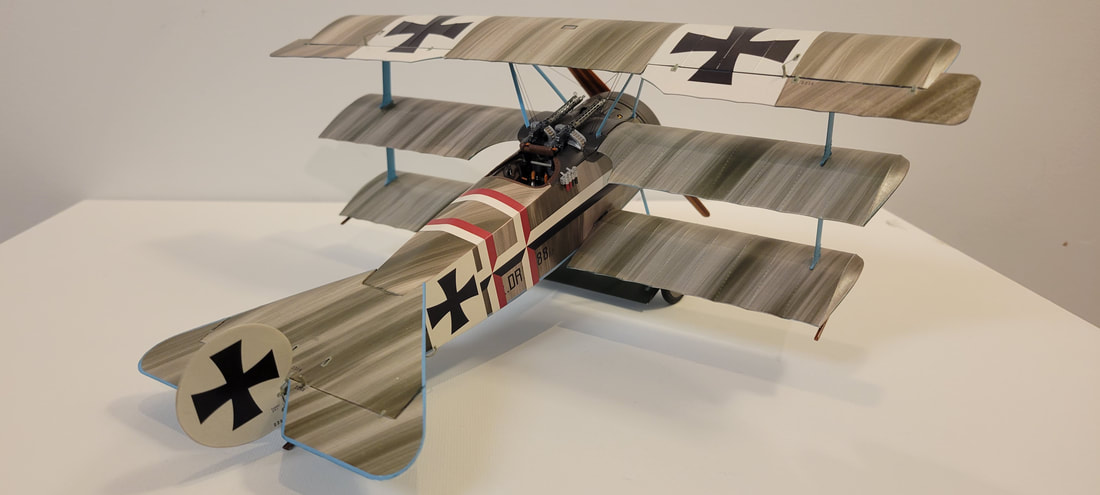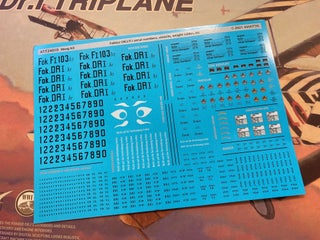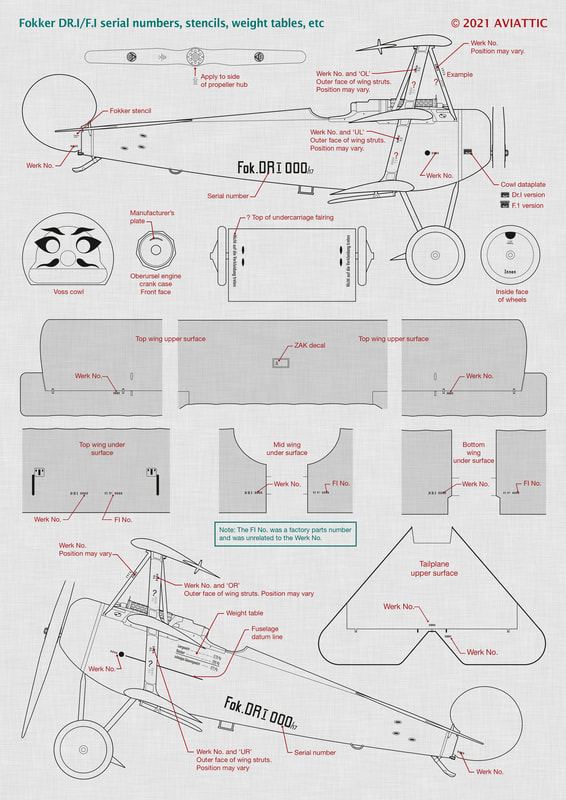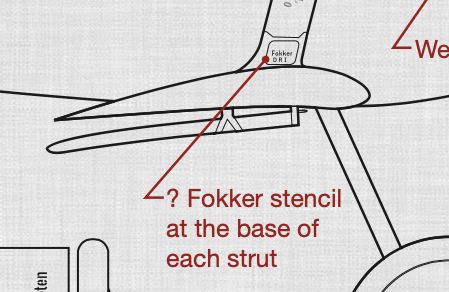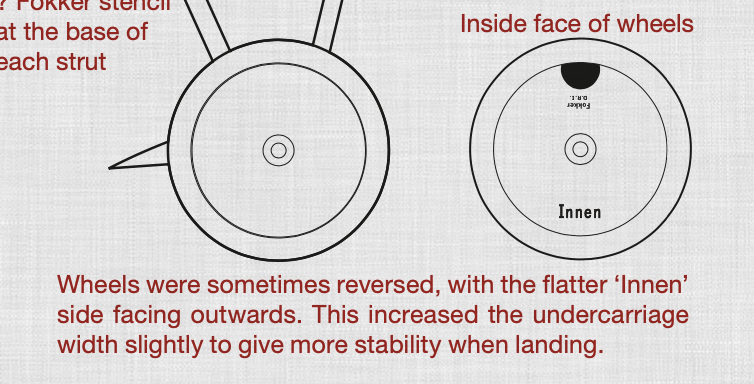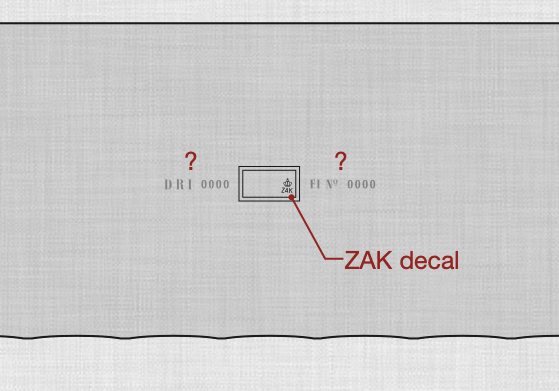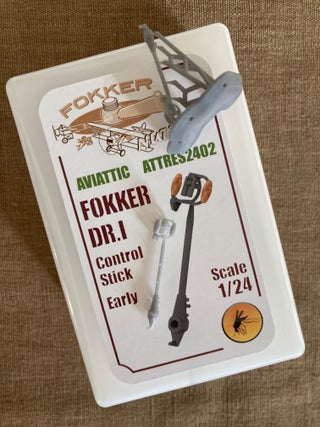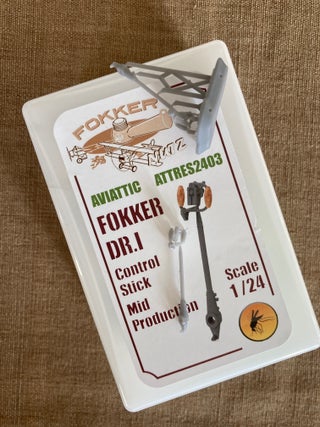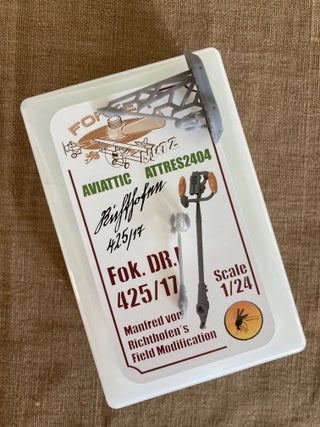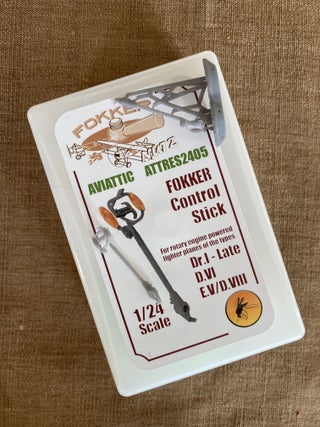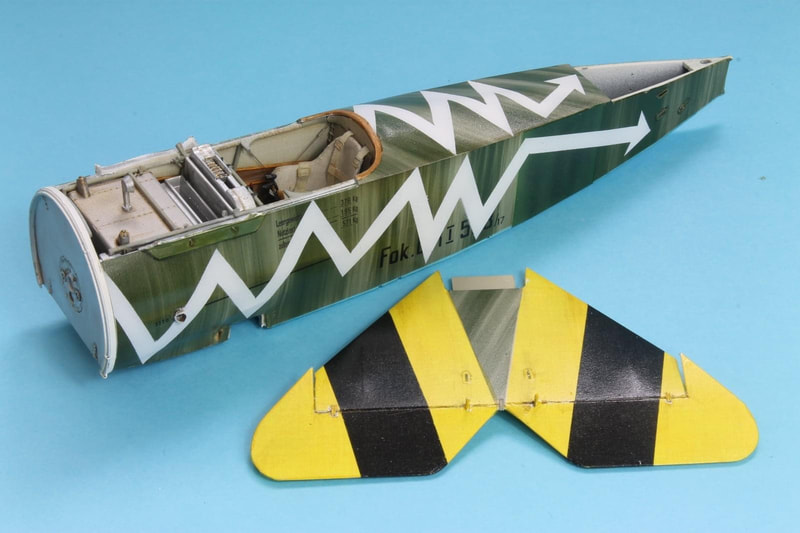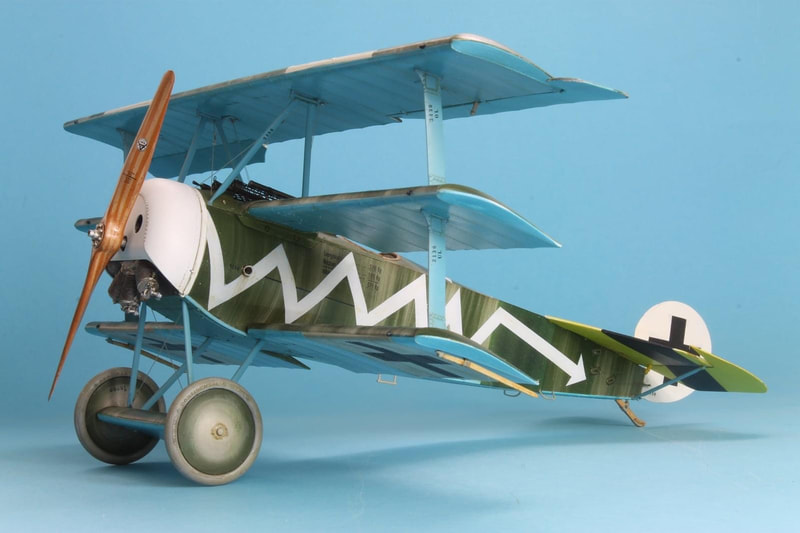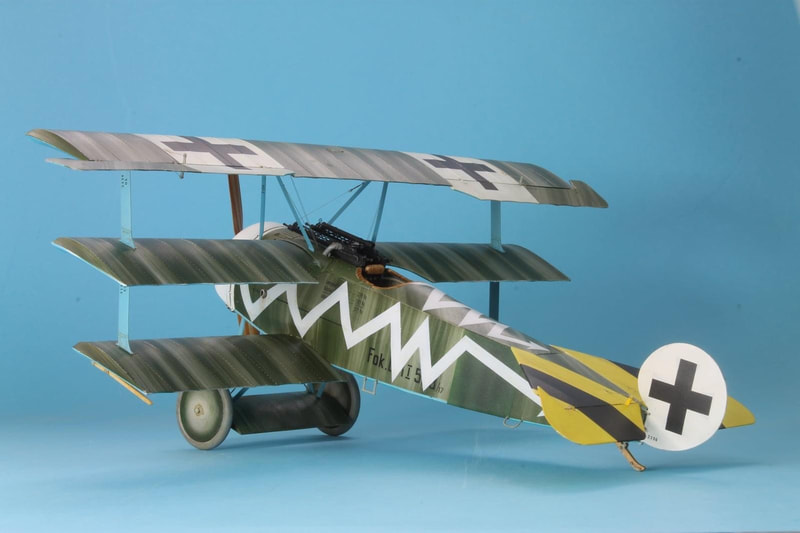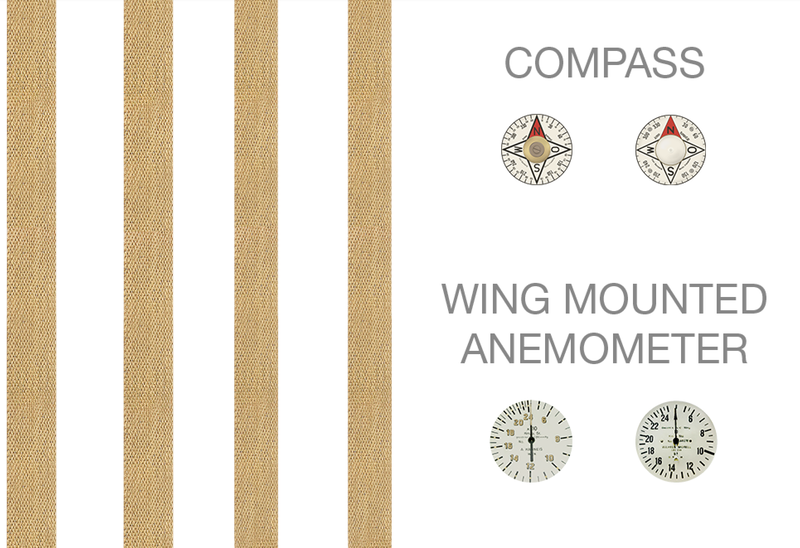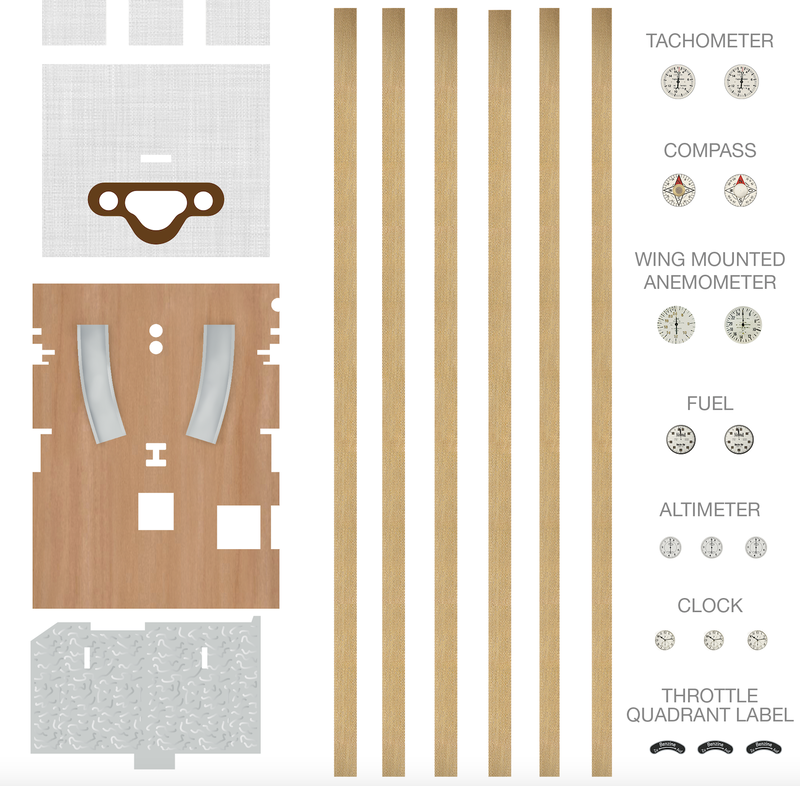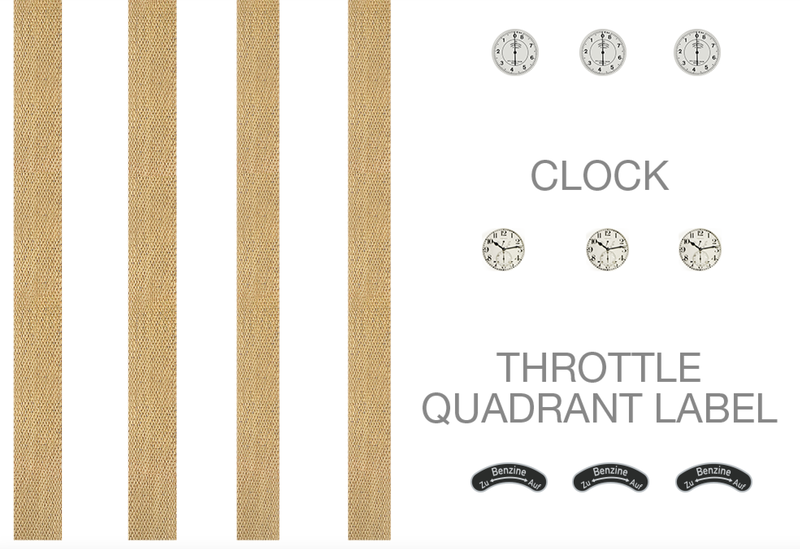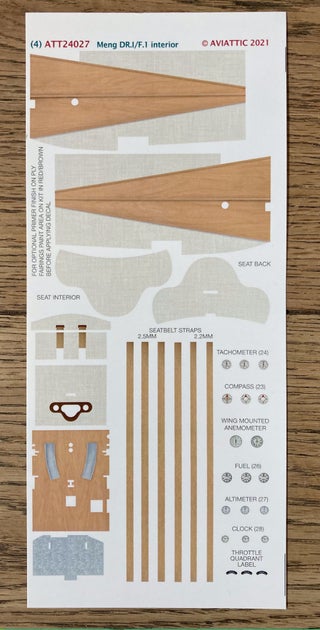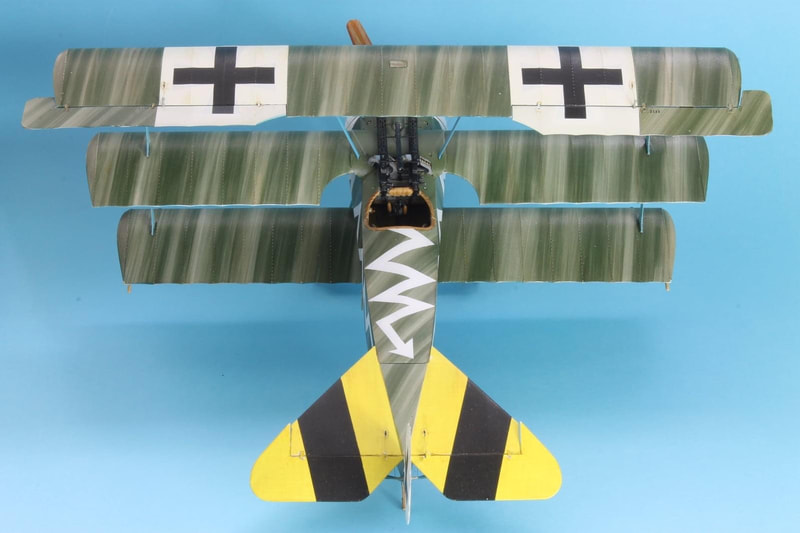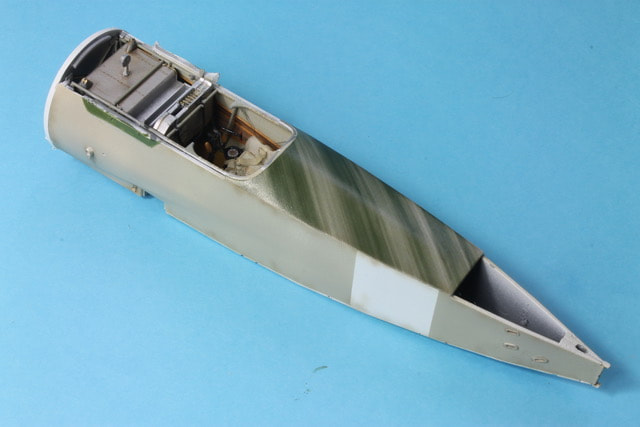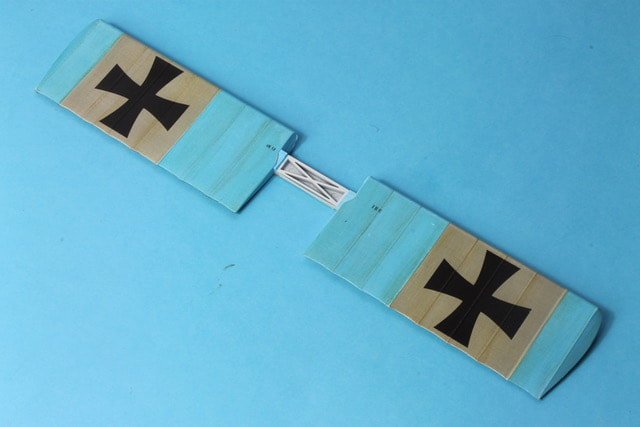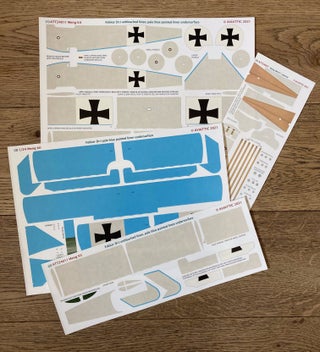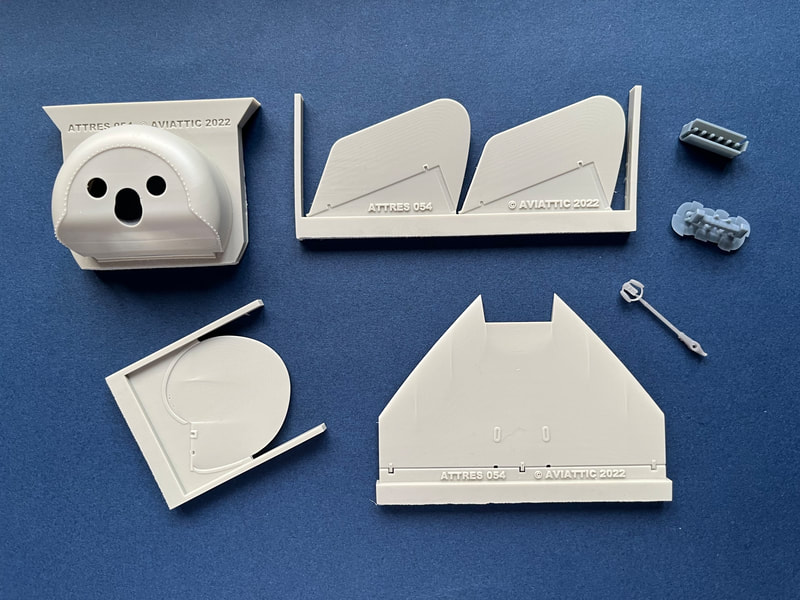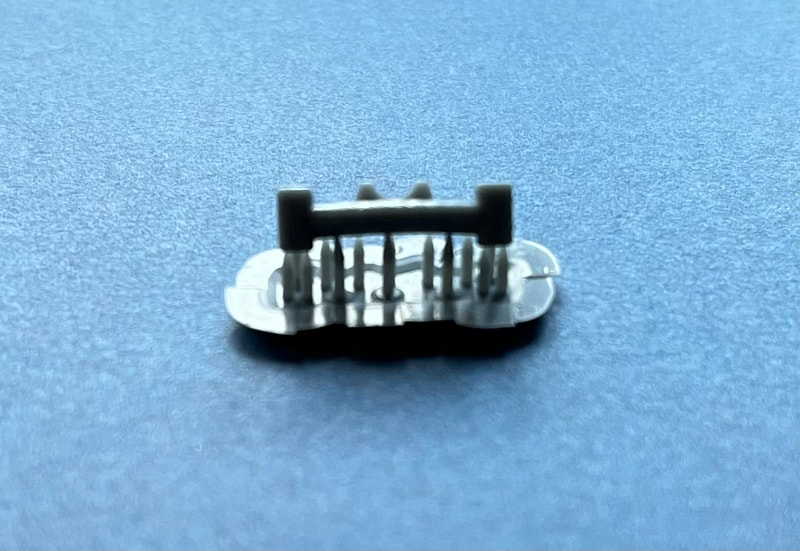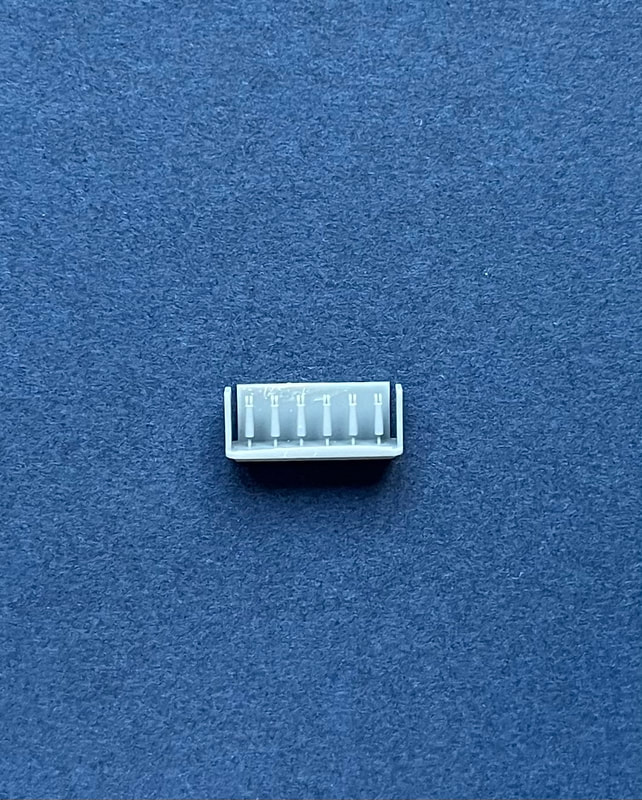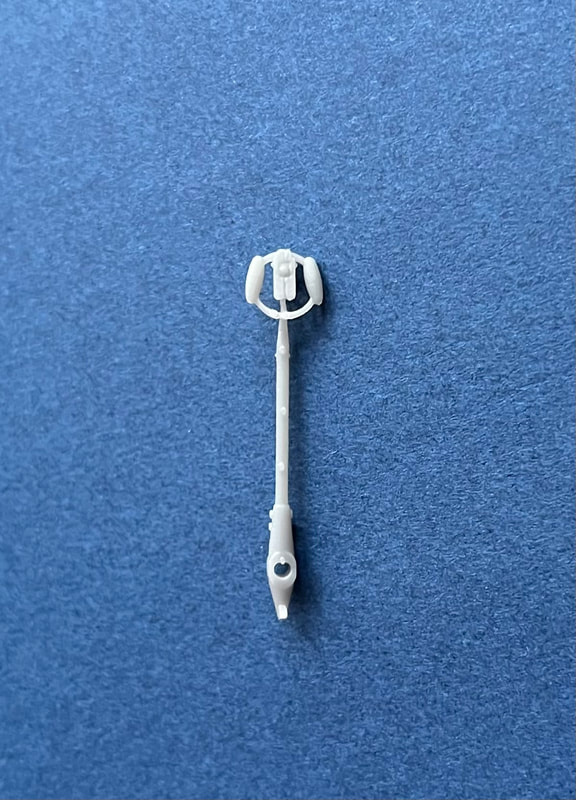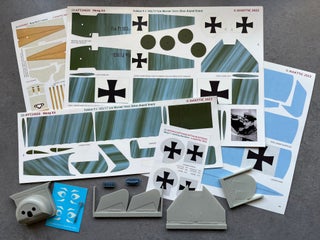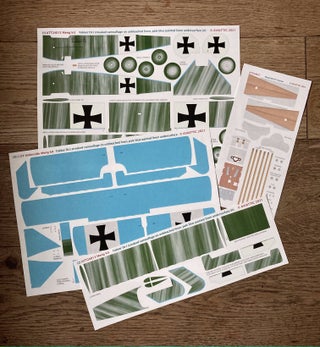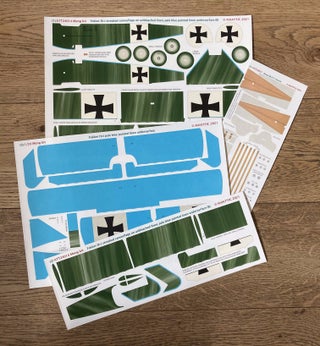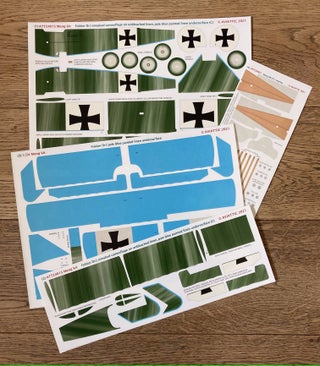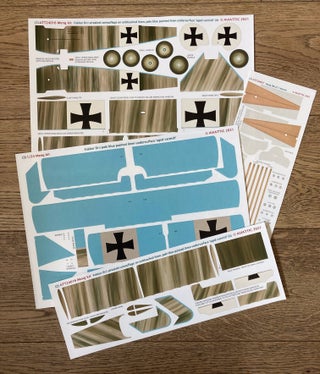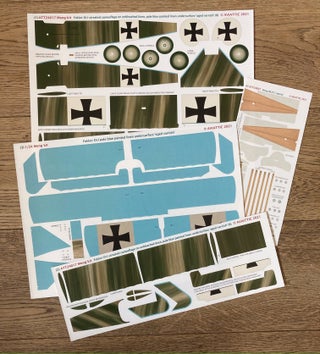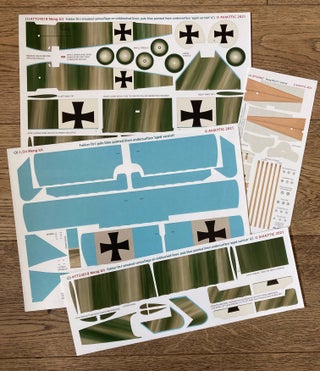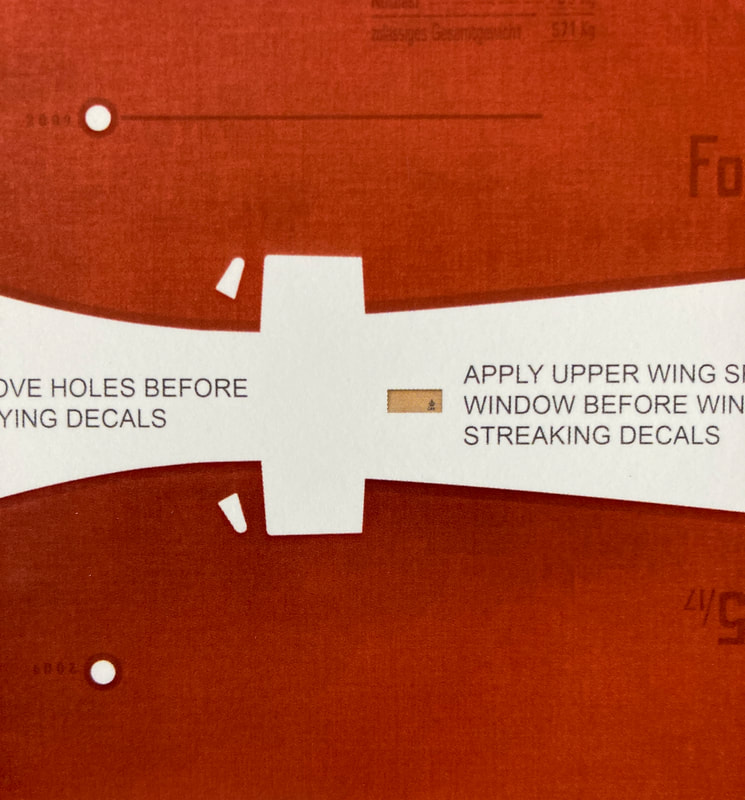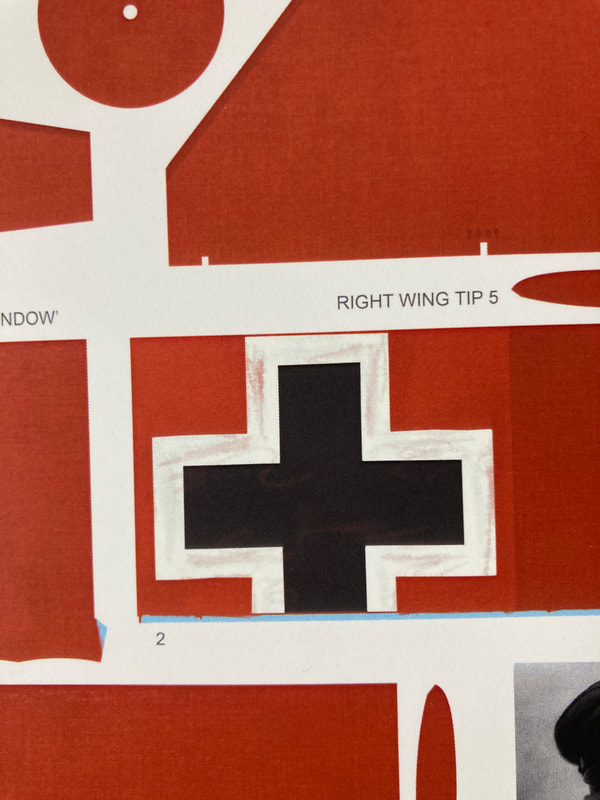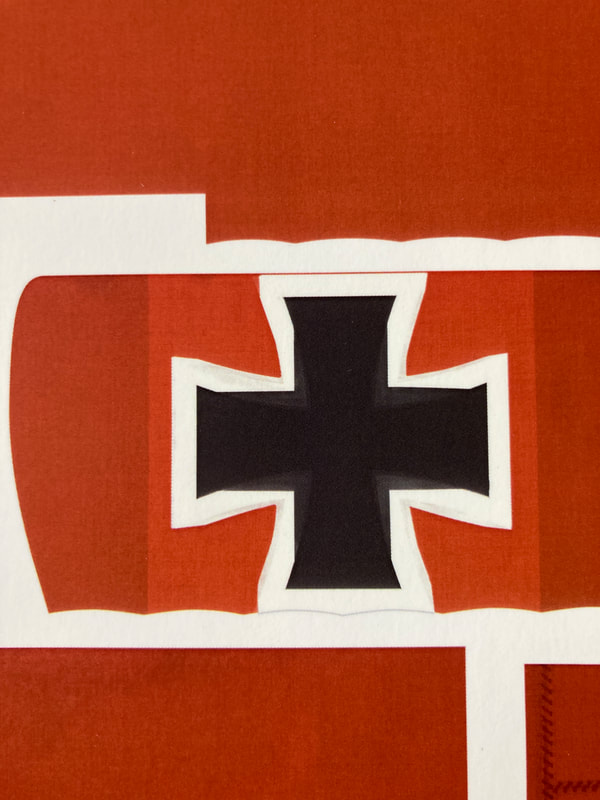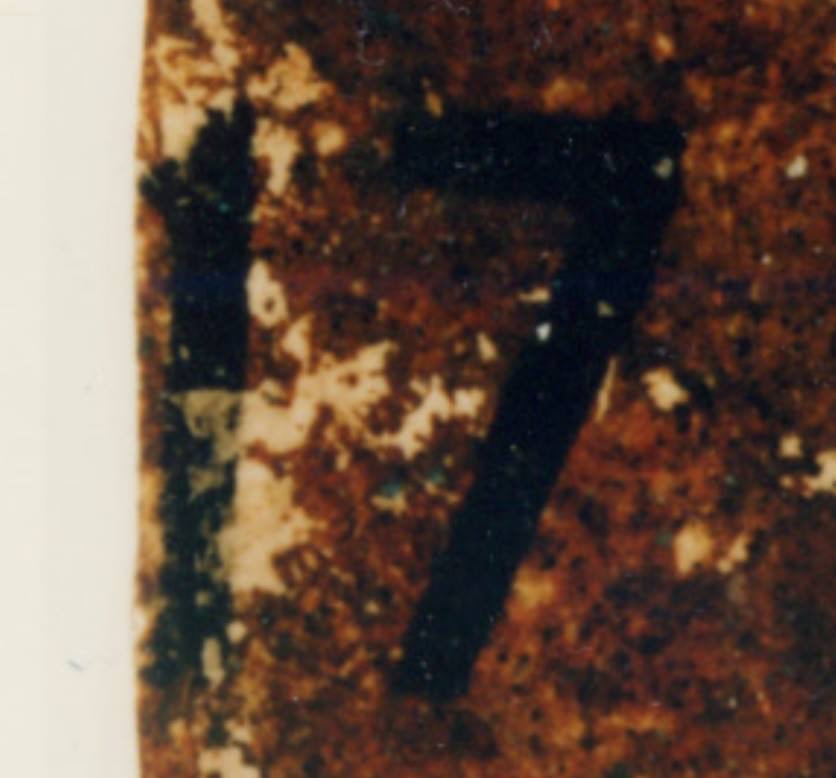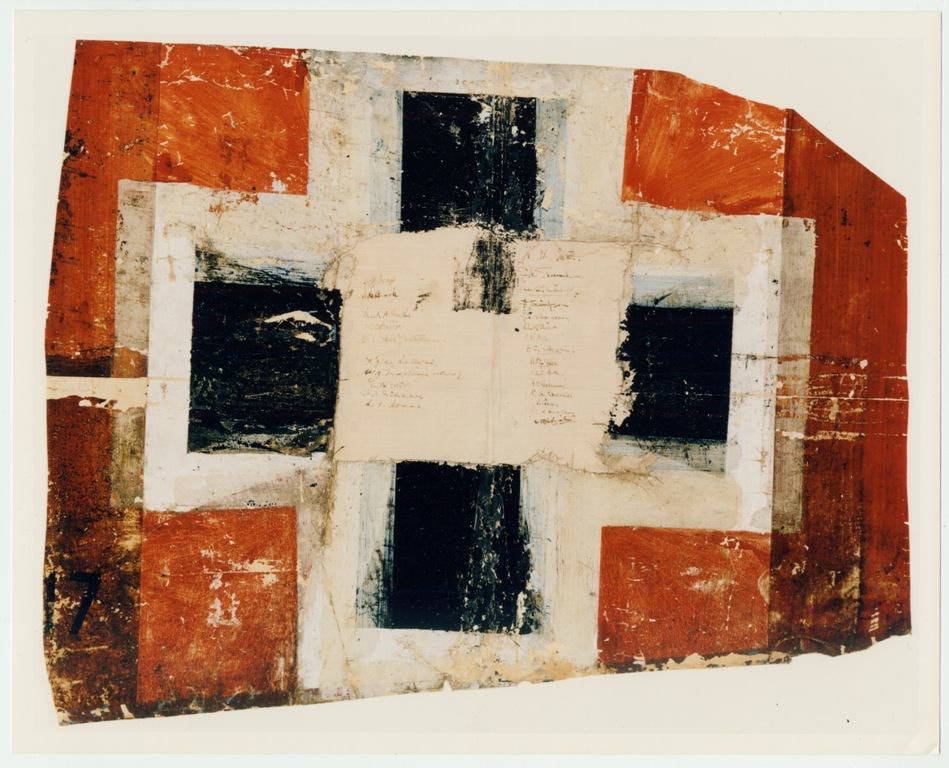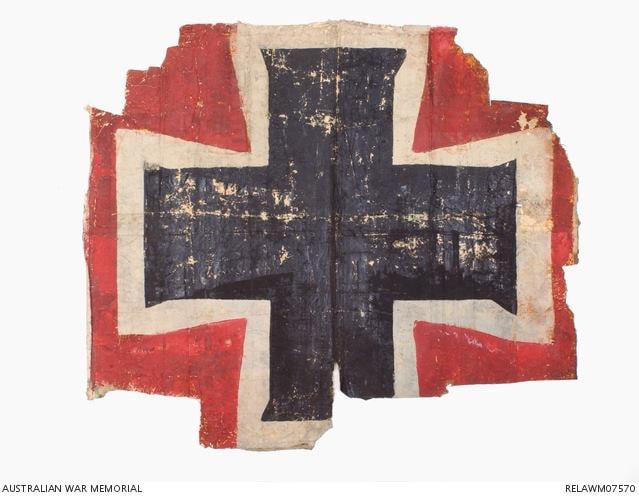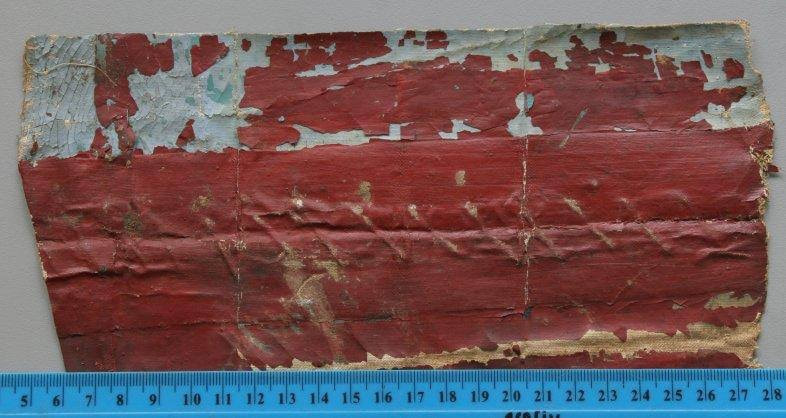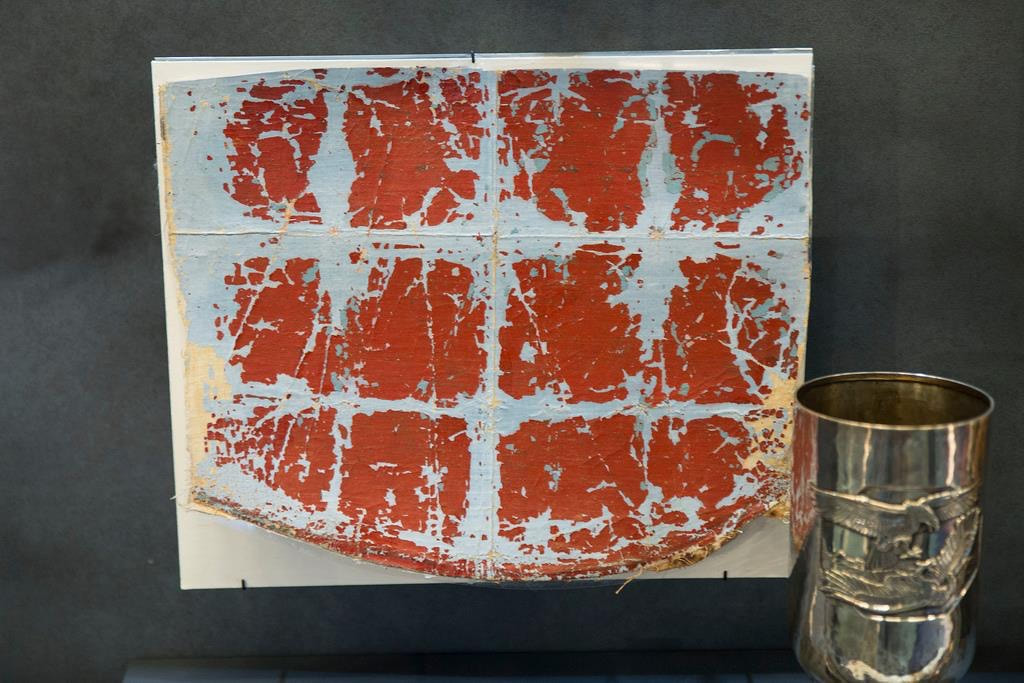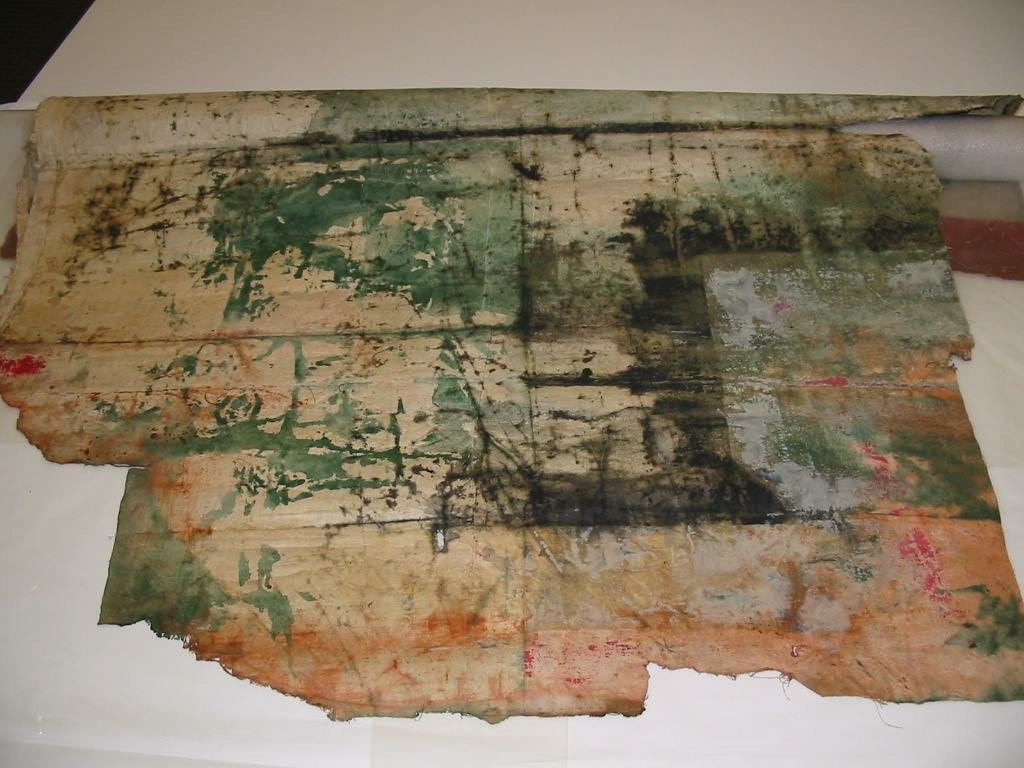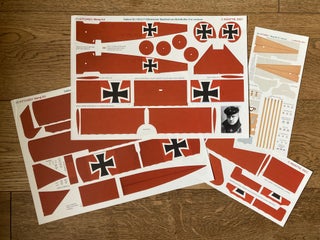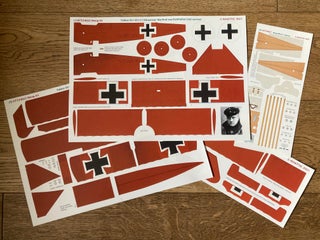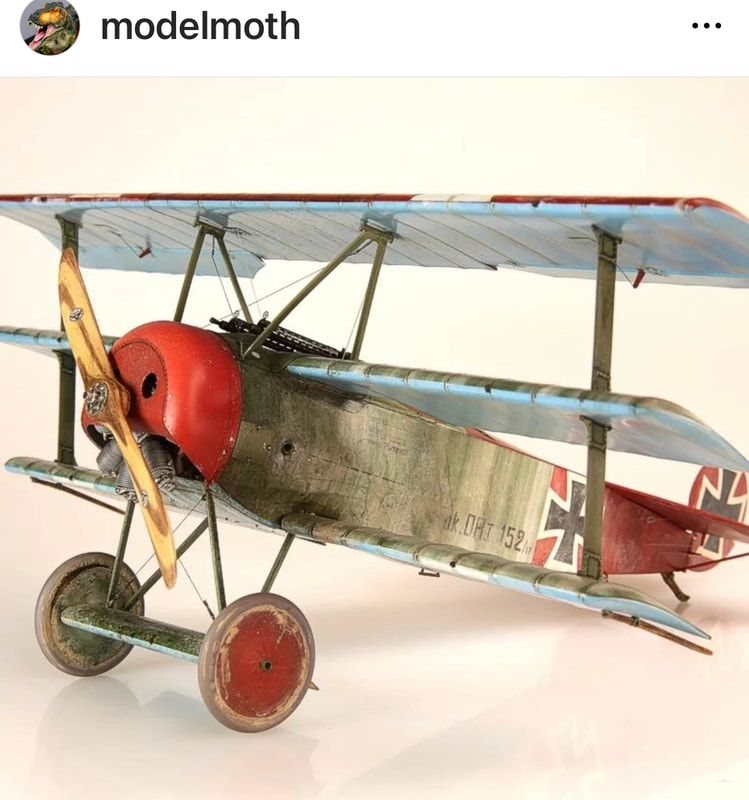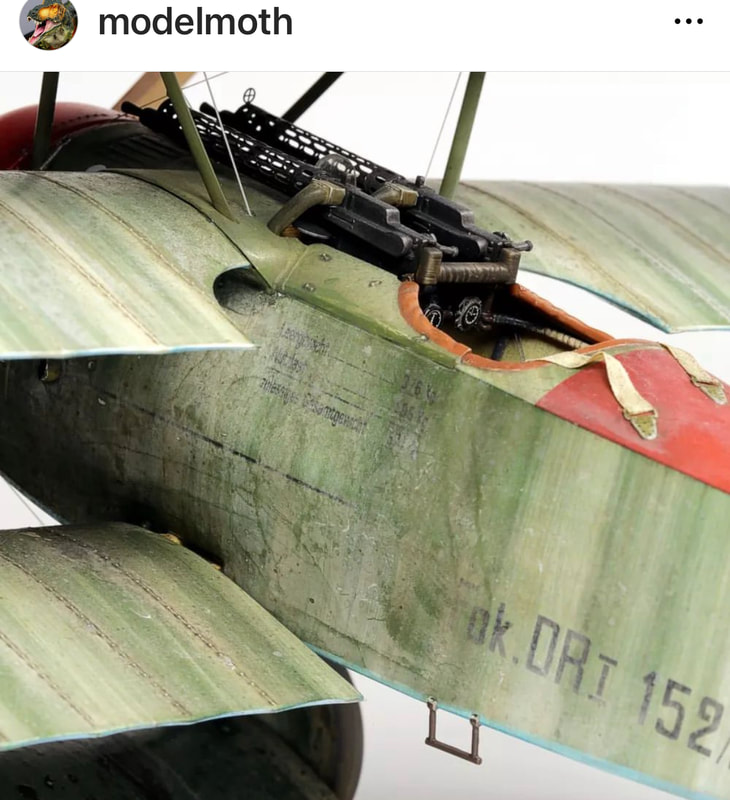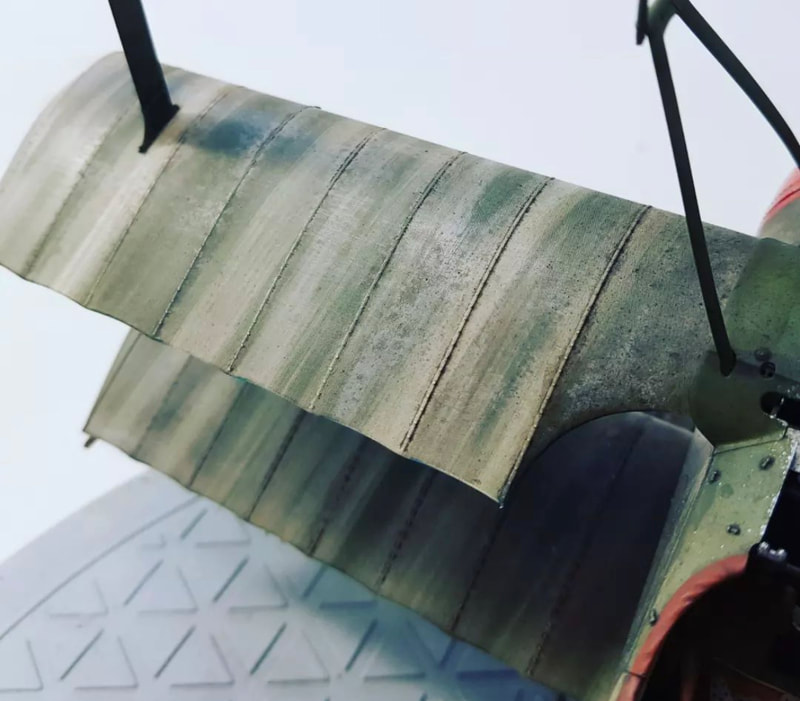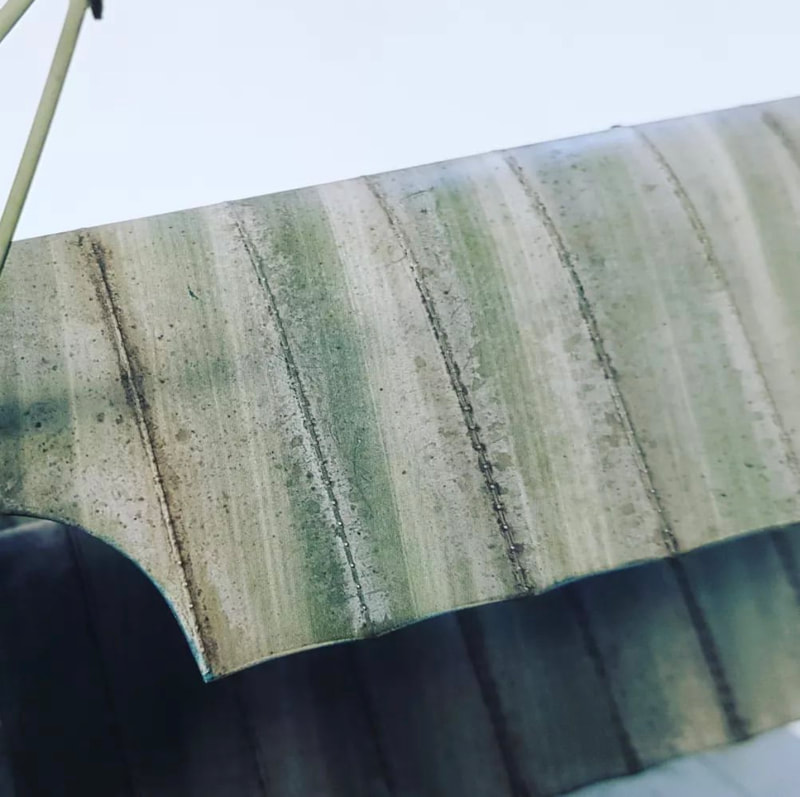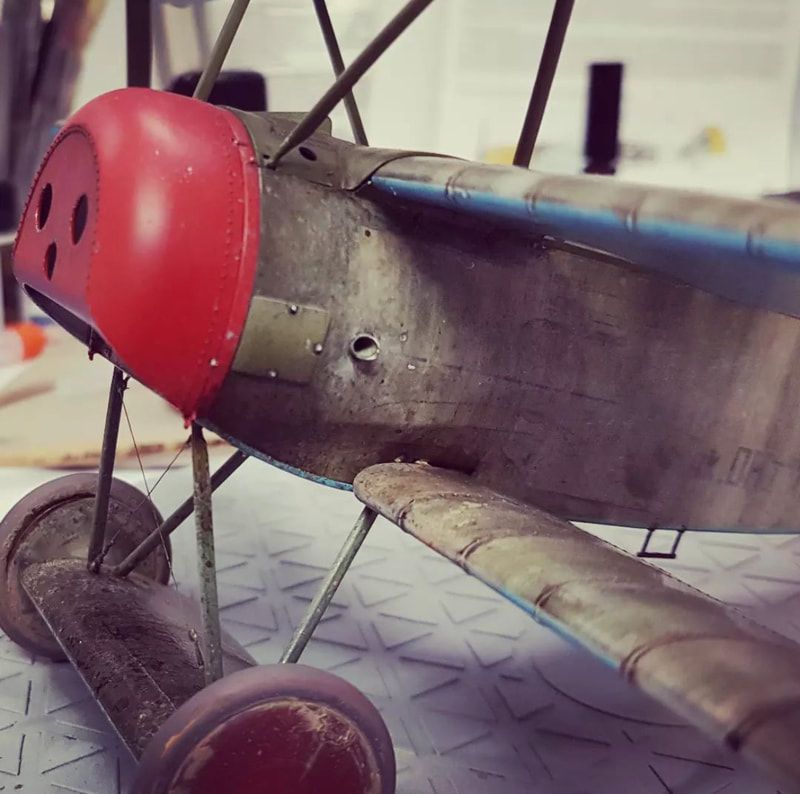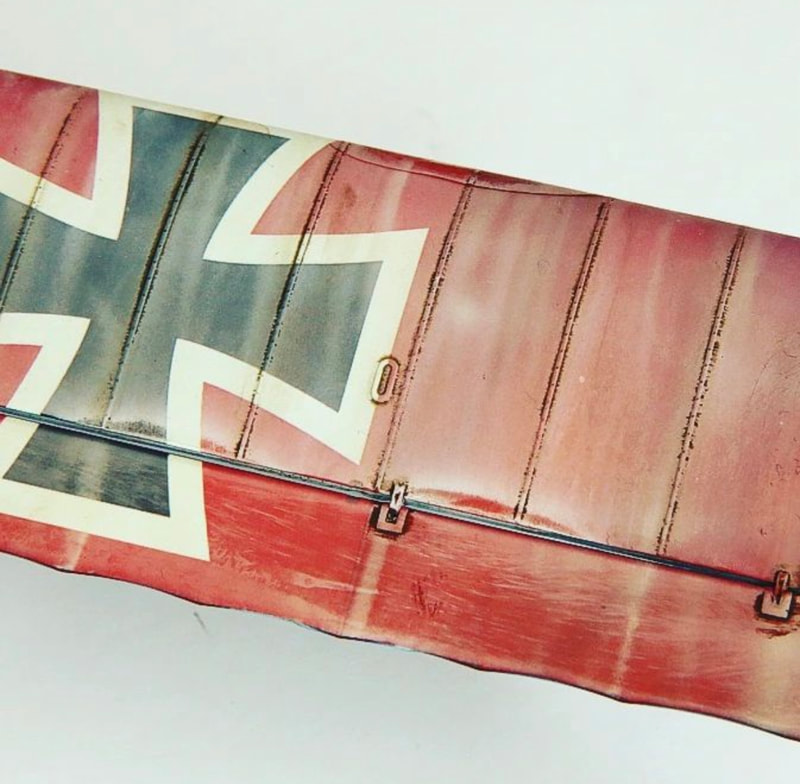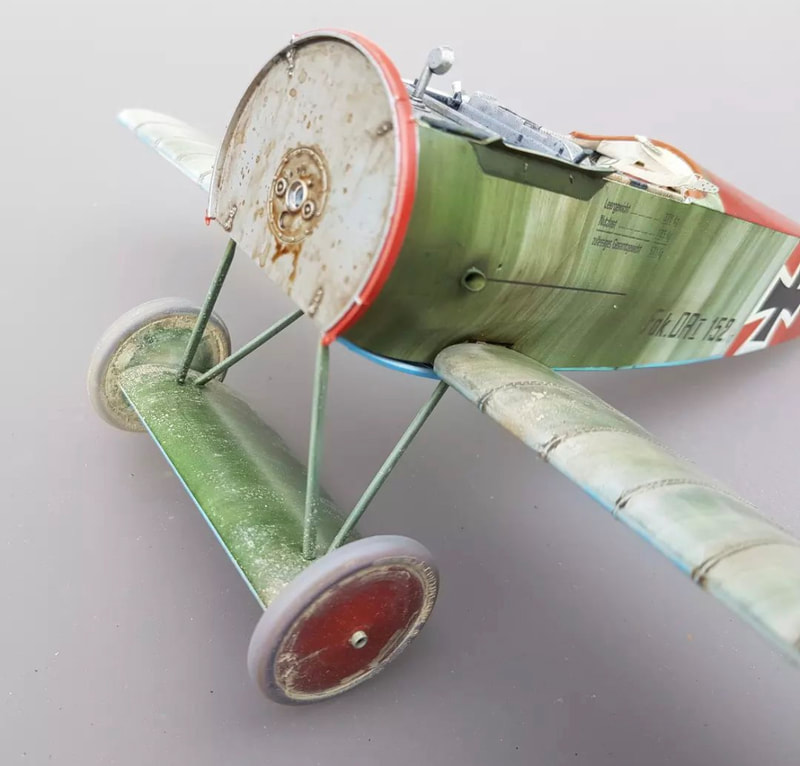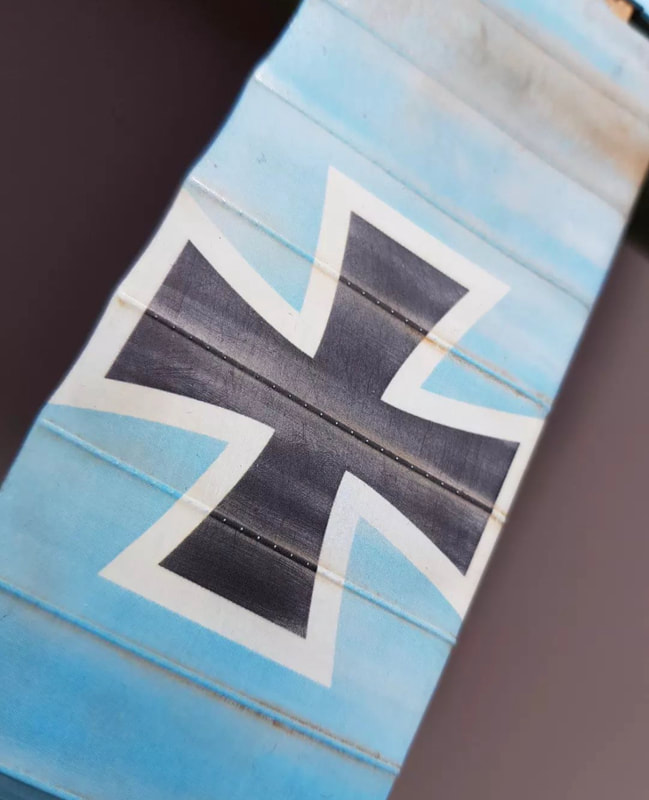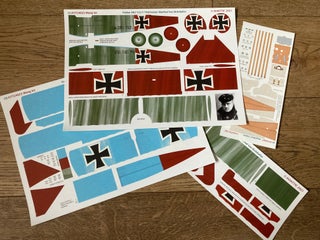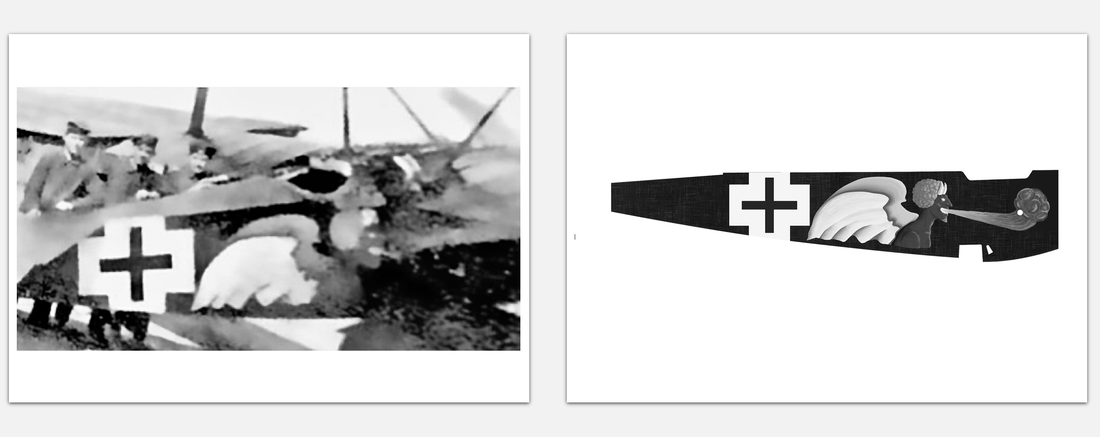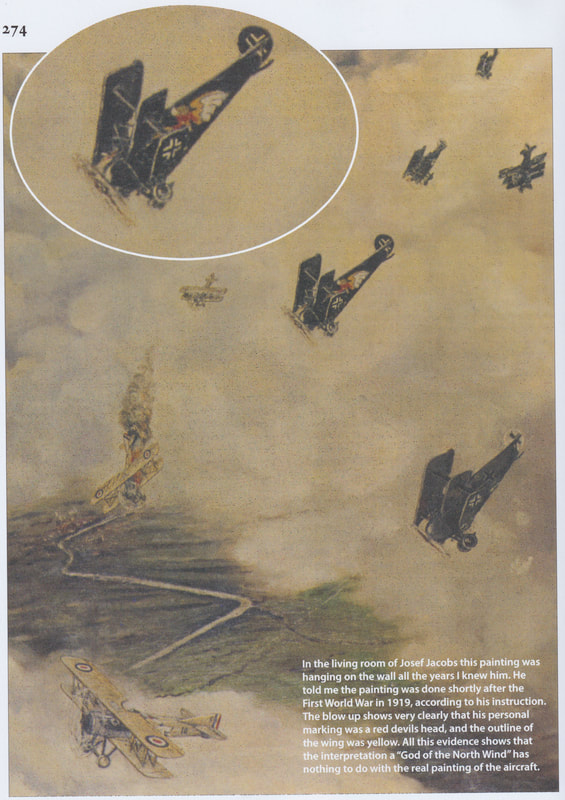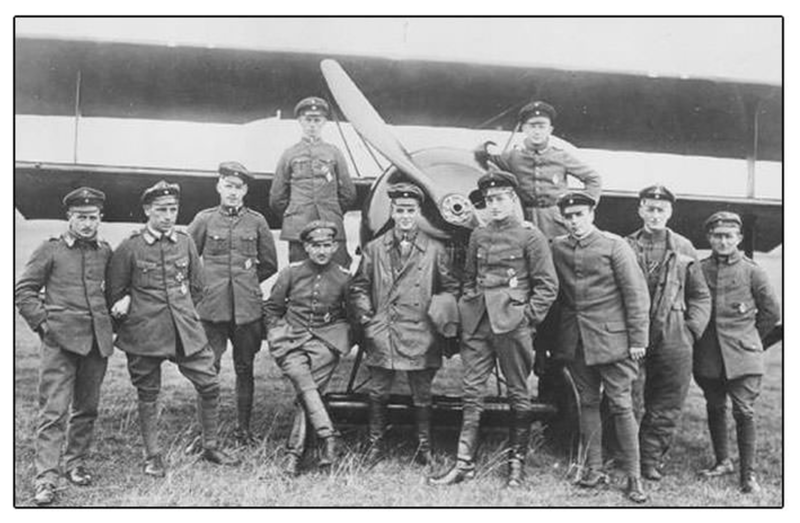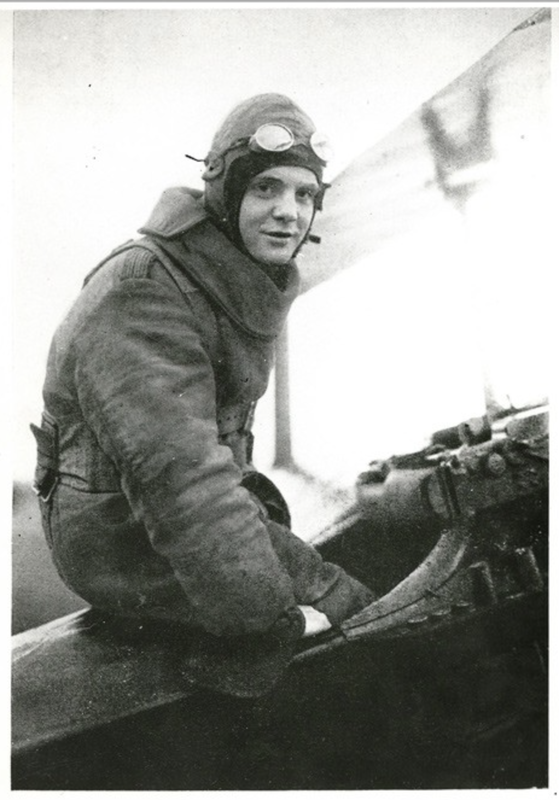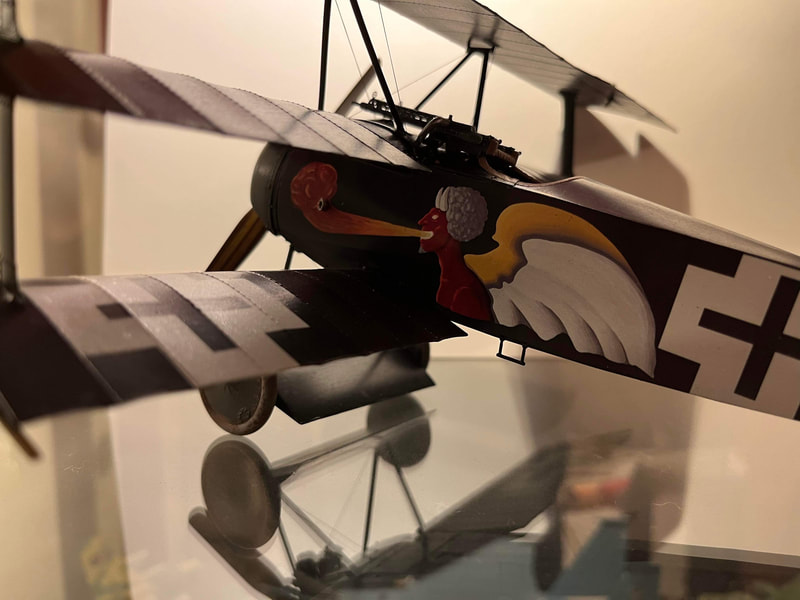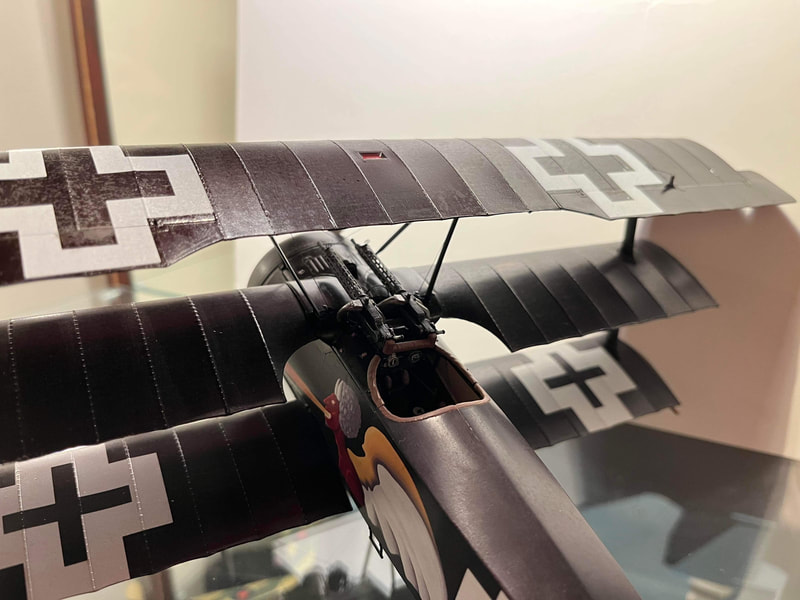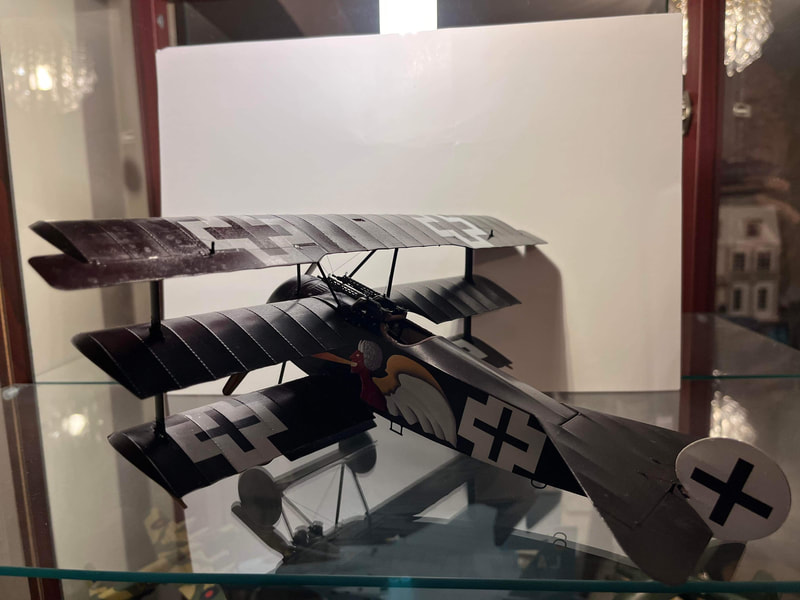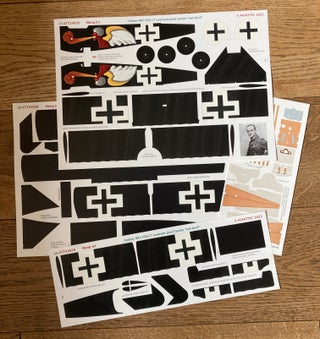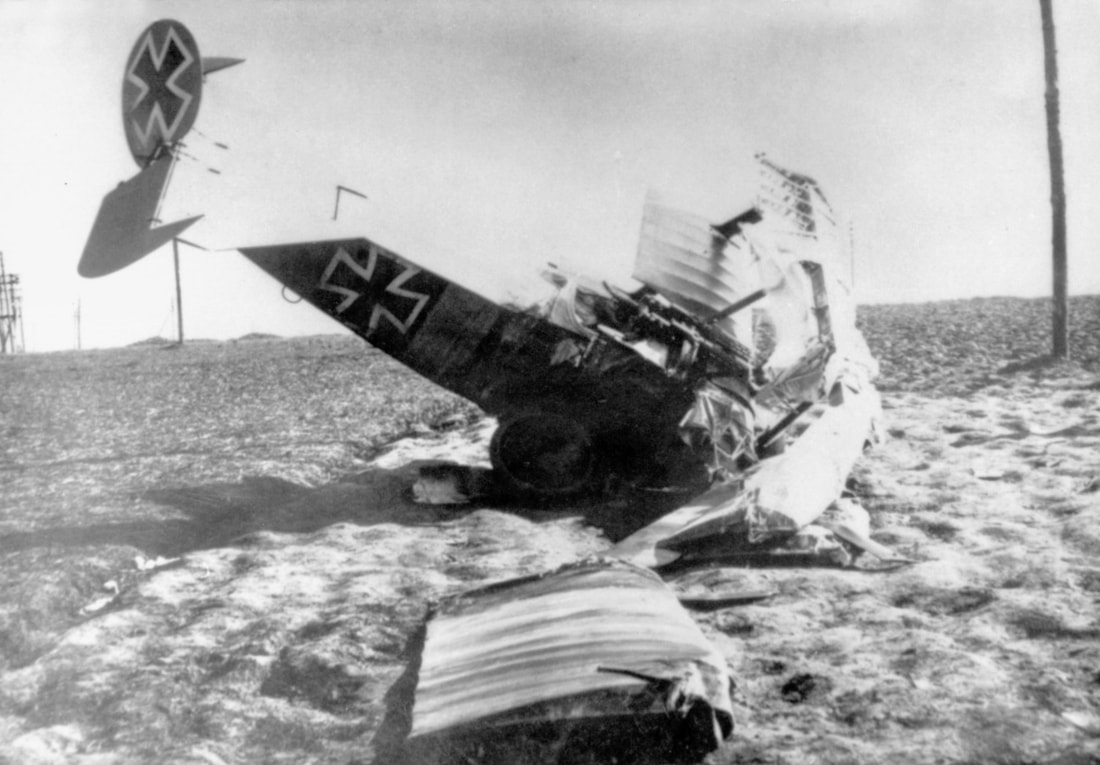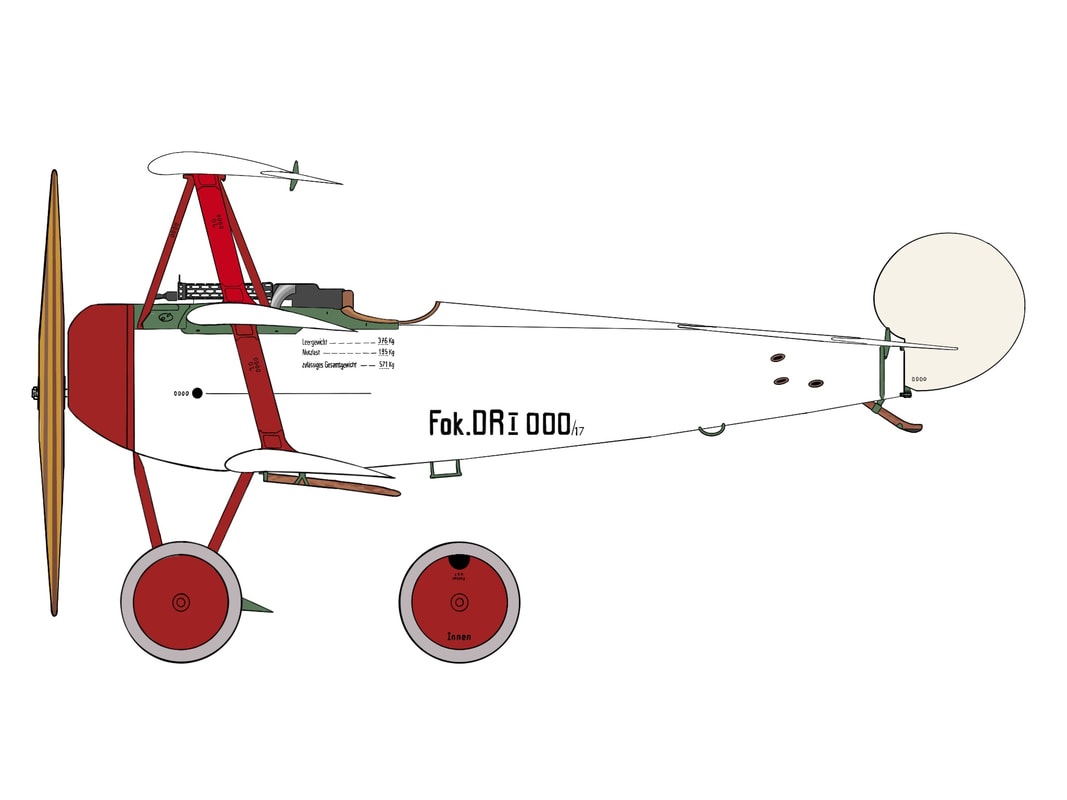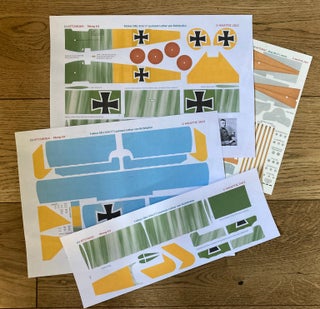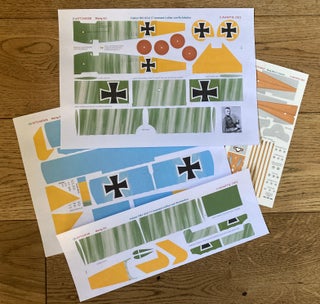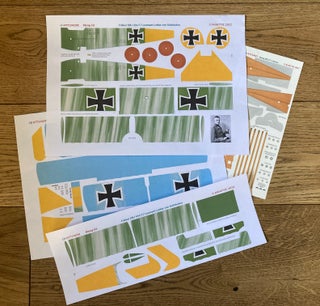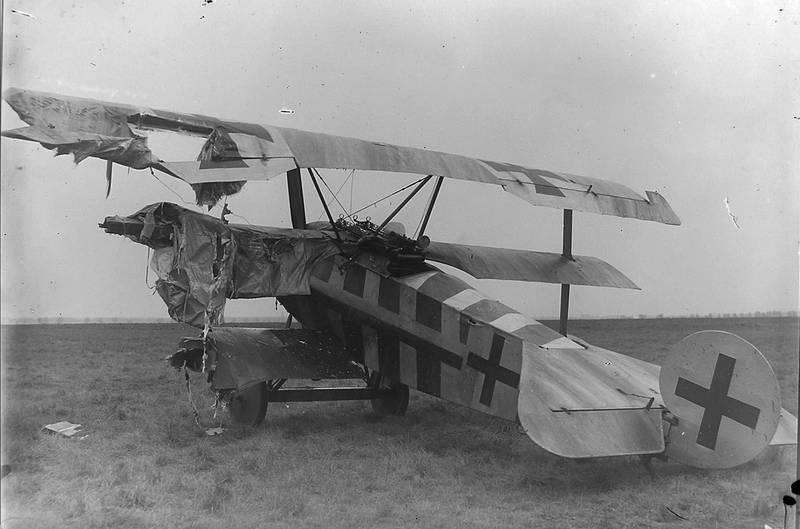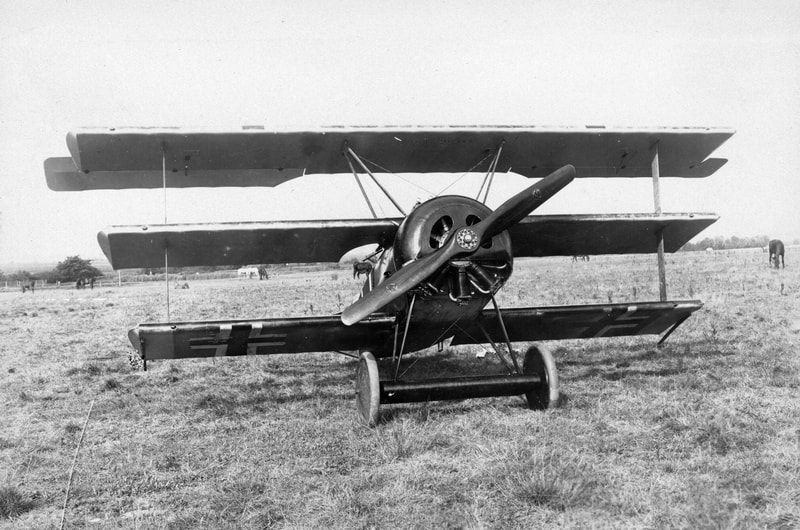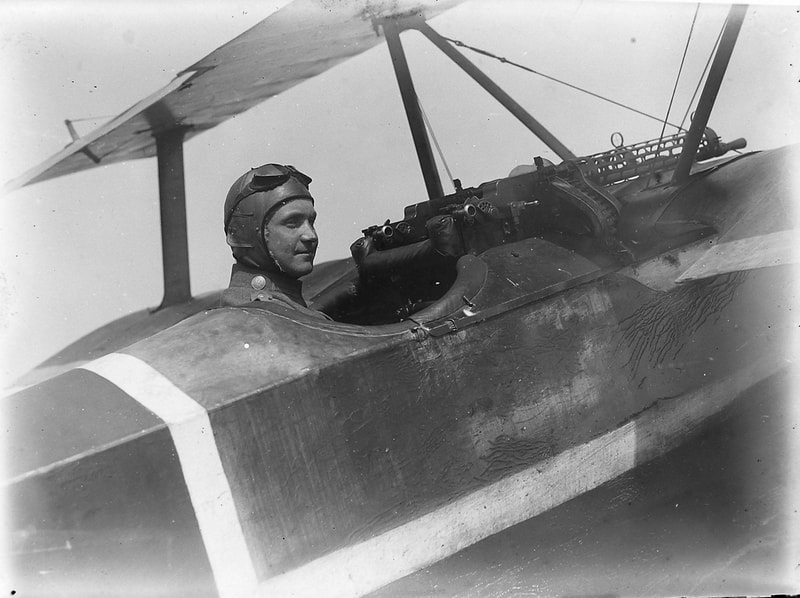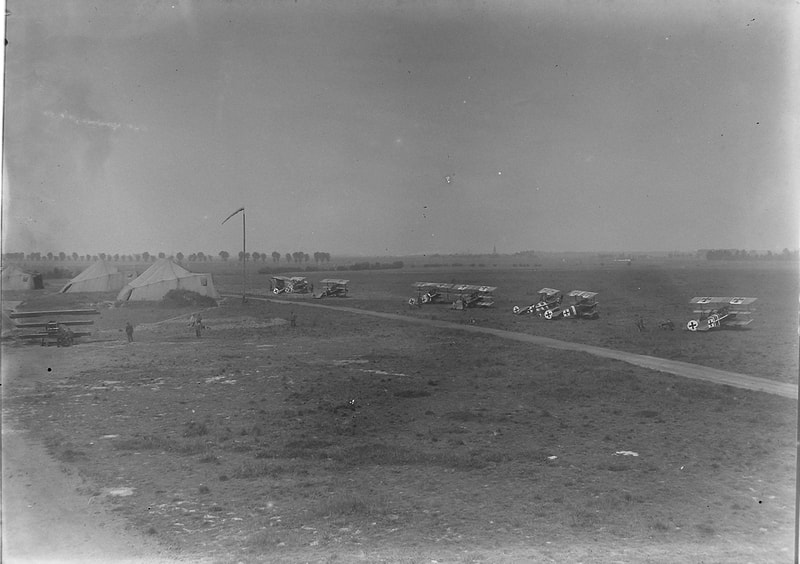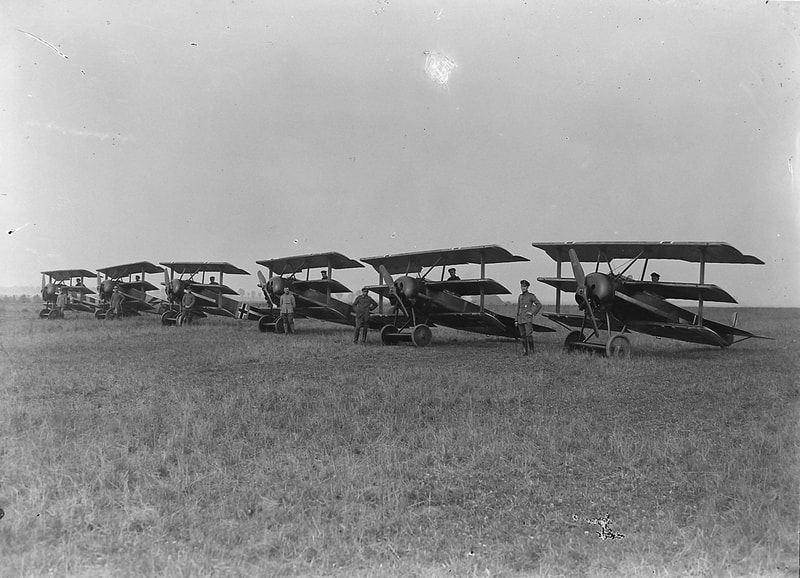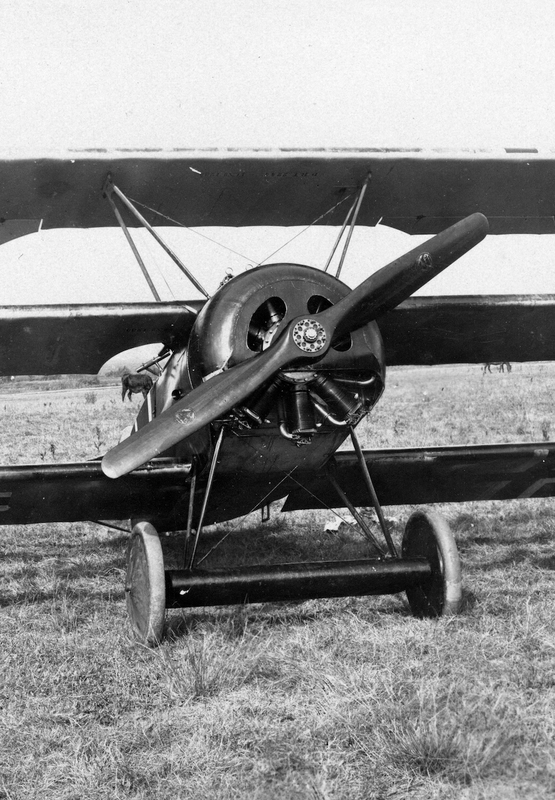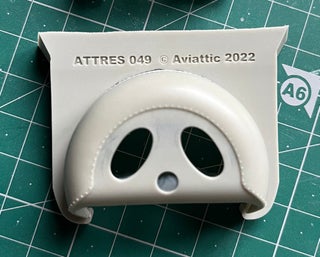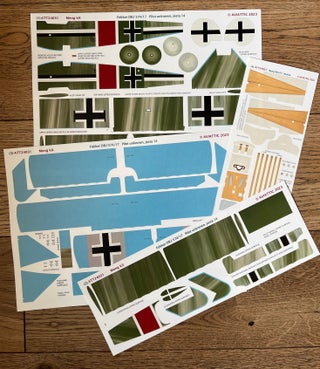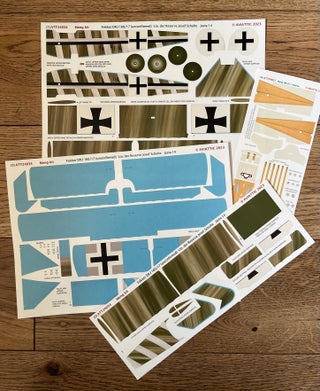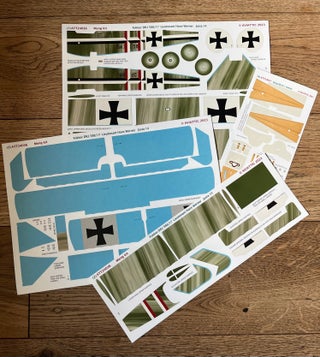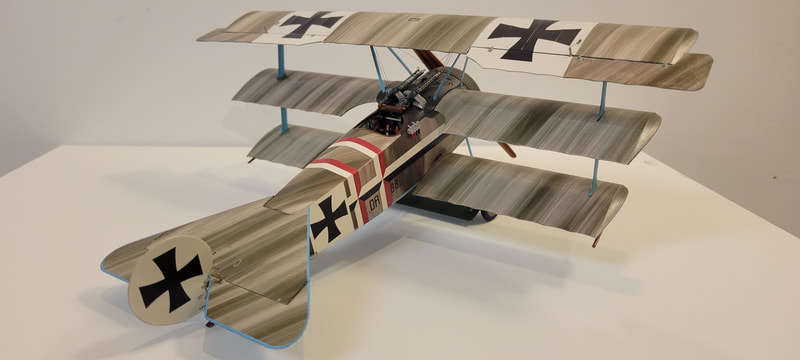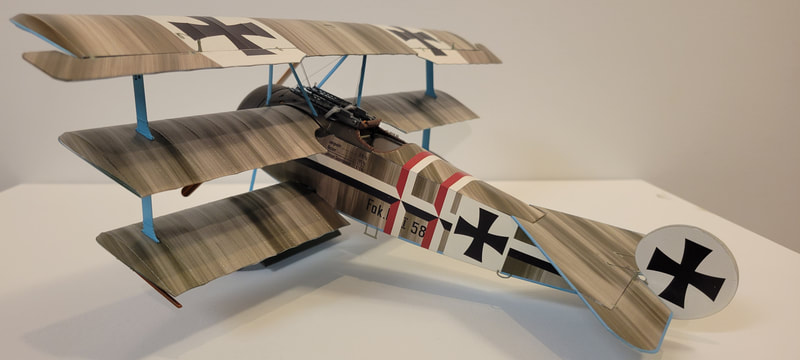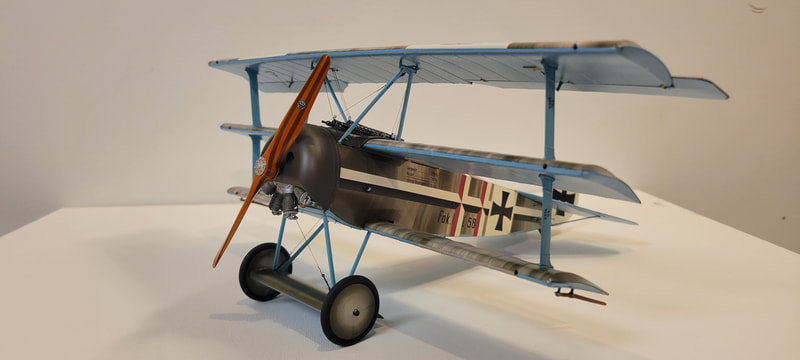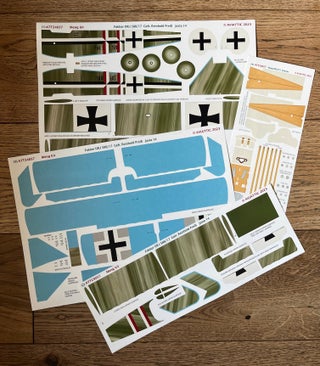1/24 Meng Fokker DR.I with Aviattic decal set ATT24013 and black and yellow painted linen sheets (ATT32064 and ATT32249). Model by Dave Hooper.
The 1/24 Meng/Wingnut Wings Fokker Dr.I is here - and it's superb..
except it's decal sheet and instructions..
ATT24010 (Meng kit) Fokker F.I/DR.I serial numbers, stencils, weights tables, propeller decals etc
Discard all the kit-included decals.
All the extensive fuselage stencilling and other details needed to enhance your 1/24 Meng triplane.
Designed with Juanita Franzi.
Includes placement guide.
With careful use enough for SIX models!
Note : Cockpit instrument faces are included in the "interior" decal set - available separately.
Placement guide designed and illustrated by Juanita Franzi and myself, included with each set.
A few additional placement possibilities - spotted after the instruction leaflet went to print!..
NEW! 3d printed control columns for the Meng kit!
Gerry works in close co-operation with Achim Engels, the German "all things Fokker" expert and replica aircraft builder and has kindly up-scaled the original 1/32 range to 1/24 scale and given me exclusive rights to them.
Due to the "unusual" conditions of the Meng triplane releases they were not of the final quality we would have expected, had they been released by Wingnut Wings and many of the parts in the kits hint at what may have been in store..
The kit-supplied control columns do not reflect the differing styles of the series through "F.I" through "Late" designs.
Serial number groupings are our only real clue as to what may be deemed "Early", "Mid" and "late" but MvR's iconic 425/17 certainly had a field-modified stick which is represented in this exquisite range.
ATTRES 2402 Fokker Nutz 1/24 Fokker DR.I control stick early production
Requires careful cutting from sprue "trees".
ATTRES 2403 Fokker Nutz 1/24 Fokker DR.I control stick mid production
Requires careful cutting from sprue "trees".
ATTRES 2404 Fokker Nutz Fokker DR.I control column MvR 425/17 field modified
Requires careful removal from sprue "trees".
ATTRES 2405 Fokker Nutz Fokker DR.I control column late production (also suitable for D.VI and E.V/D.VIII)
Requires careful removal from sprue "trees".
FOUR-SHEET DECAL SETS OFFERING DIFFERENT FINISHES AND STREAKING EFFECTS!..
At this large scale they create a sublime finish...
Pilot's "zig-zag" marking created using standard white printed decal stock.
Each decal set contains four sheets.
For 425/17 MvR builds use the right hand version of the compass face from the decal sheet.
Complete the individual building of fuselage, axle wing, tailplane and wings (do not attach struts), then decal each white gloss primed sub-assembly BEFORE final construction of all the elements.
Read the instructions (please!) and seal decals thoroughly with two coats of varnish before applying markings decals or masks.
Selection of exquisite instrument faces and throttle quadrant label
Hessian effect seatbelts (to be applied over white-painted foil straps)
Plywood effect floor and fuselage panels
Unbleached linen effect seat covering, fuselage sides and panel
Swirled aluminium effect ammunition canister
ATT24027 (Meng) Fokker F.I/DR.I interior set
Unbleached linen, aluminium, plywood, canvas and a selection of gorgeous instrument faces and even the throttle quadrant label!
Make your own seatbelts (use the kit versions as templates and the photo-etch buckles) from lead foil, painted white and apply the canvas decals!
ATT24011 (Meng kit) Fokker Dr.I unbleached linen with pale blue painted linen undersurfaces
This set is offered for those who may prefer to add their own streaked paint finish over Aviattic's ultra-realistic "unbleached linen" background.
Apply over white gloss base as usual, seal with at least two coats of gloss varnish, mask fuselage and tail blue edge lines (with de-tacked masking tape) before adding your green or brown/green oil streaking. Practice dragging freshly loaded brush until paint nearly exhausted, creating dark and thinned effects - just like real practice!
Varnish coat to seal when thoroughly dry and remove masking.
Varnish again and add markings decals, weathering etc. before yet more varnish coats to achieve a mid-sheen finish.
Check references of your the streaking "footprint" of your chosen subject!
Alter national markings to later variants by overpainting the "factory finish" 1917 versions supplied, as done "in the field", for the ultimate in realism!
Fokker F.I conversion set for Voss' 103/17
ATT24012 (for Meng kit) Fokker F.I 103/17 Ltn. Werner Voss resin conversion set and full decals, 'natural linen' upper airframe
Resin conversion set with full decal scheme to create Voss' iconic F.I 103/17.
Set includes full cowling, tail and rudder, gun padding, elevator and rudder control horns particular to the F.I prototypes, designed with Mike Swinburne, Gerry Mos designed 3d printed control column and full streaking camouflage decals, including instrument faces and interior, alternative natural linen fuselage insignia and rudder panels PLUS screen-printed Voss cowling 'face' decal, designed with Juanita Franzi.
This decal set is an interpretation of the F.I finish as natural, varnished linen beneath the streaked camouflage.
Leaving the fuselage national markings fields and rudder in doped linen rather than white-painted is a possibility, explaining the odd pure-white painted repairs seen on one photograph. Why this practice wouldn't have been repeated on the top wings of this prototype is another inconsistency and a mystery.
A supplementary decal sheet is included to allow for this option, as is a screen printed cowling 'face', which may - or may not - have been present at the time of Voss' last flight. Considering the close proximity of the seven Squadron 56 pilots in this final battle to his machine, many of them observing the action closely before engaging, it is strange that the 'face' or contentious yellow cowling is not mentioned by any in their reports..
A possible conclusion would be that the painted cowling was damaged in a previous action and had been replaced by a regular one for the morning of the 23rd September...
OUT OF STOCK
ATT24020 (for Meng kit) Fokker F.I 103/17 Ltn. Werner Voss resin conversion set and full decals, 'blue painted linen' upper airframe
Resin conversion set with full decal scheme to create Voss' iconic F.I 103/17.
Set includes full cowling, tail and rudder, gun padding, elevator and rudder control horns particular to the F.I prototypes, designed with Mike Swinburne, Gerry Mos designed 3d printed control column, full streaking camouflage decals including instrument faces and interior, alternative natural linen fuselage insignia and rudder panels PLUS screen-printed Voss cowling 'face' decal, designed with Juanita Franzi.
This 'blue' scheme better explains the Squadron 56 combat report of McCudden - a "silvery blue triplane". The overall pale blue dope explains why there is no blue edging to fuselage bottom edge or around tail surfaces, as is evident on later, clear-doped production machines.
Leaving the fuselage national markings fields and rudder in doped linen rather than white-painted is a possibility, explaining the odd pure-white painted repairs seen on one photograph. Why this practice wouldn't have been repeated on the top wings of this prototype is another inconsistency and a mystery.
A supplementary decal sheet is included to allow for this option, as is a screen printed cowling 'face', which may - or may not - have been present at the time of Voss' last flight. Considering the close proximity of the seven Squadron 56 pilots in this final battle to his machine, many of them observing the action closely before engaging, it is strange that the 'face' or contentious yellow cowling is not mentioned by any in their reports..
A possible conclusion would be that the painted cowling was damaged in a previous action and had been replaced by a regular one for the morning of the 23rd September...
OUT OF STOCK
ATT24013 (Meng) Fokker DR.I streaked camouflage on unbleached linen, pale blue paint on linen undersurface (A)
Given that each triplane was painted individually, no two should look identical and so we offer three different streaking schemes which you can individualise further, should you wish, with streaking and bands of mid-green or even brown, applied to your white gloss-primed undercoat before decalling. Check references of your chosen subject!
Alter the supplied national markings by overpainting the "factory finish" 1917 versions as done "in the field" for the ultimate in realism!
This is generic streaking pattern "A".
ATT24014 (Meng kit) Fokker Dr.I streaked camouflage on unbleached linen, pale blue painted linen undersurfaces (B)
Given that each triplane was painted individually, no two should look identical and so we offer three different streaking schemes which you can individualise further, should you wish, with streaking and bands of mid-green or even brown, applied to your white gloss-primed undercoat before decalling. Check references of your chosen subject!
Alter the supplied national markings by overpainting the "factory finish" 1917 versions as done "in the field" for the ultimate in realism!
This is generic streaking pattern "B".
ATT24015 (Meng kit) Fokker Dr.I streaked camouflage on unbleached linen, pale blue painted linen undersurfaces (C)
Given that each triplane was painted individually, no two should look identical and so we offer three different streaking schemes which you can individualise further, should you wish, with streaking and bands of mid-green or even brown, applied to your white gloss-primed undercoat before decalling. Check references of your chosen subject!
Alter the supplied national markings by overpainting the "factory finish" 1917 versions as done "in the field" for the ultimate in realism!
This is generic streaking pattern "C".
ATT24016 (Meng kit) Fokker DR.I streaked camouflage on unbleached linen, pale blue paint on linen undersurfaces "aged varnish" (A)
Given that each triplane was painted individually, no two should look identical and so we offer these three different streaking schemes which exhibit the effects of weathering over a period of months. The linseed element of WW1 varnishes would turn brown once exposed to the elements, creating the impression of more than one colour paint having been used.
Again, you can further individualise the streaking by adding your own to the gloss white-painted model before decal application.
This is "aged varnish" pattern (A)
ATT24017 (Meng kit) Fokker Dr.I streaked camouflage on unbleached linen, pale blue painted linen undersurfaces "aged varnish" (B)
Given that each triplane was painted individually, no two should look identical and so we offer these three different streaking schemes which exhibit the effects of weathering over a period of months. The linseed element of WW1 varnishes would turn brown once exposed to the elements, creating the impression of more than one colour paint having been used.
Again, you can further individualise the streaking by adding your own to the gloss white-painted model before decal application.
This is "aged varnish" pattern (B)
ATT24018 (Meng kit) Fokker Dr.I streaked camouflage on unbleached linen, pale blue painted linen undersurfaces "aged varnish" (C)
Given that each triplane was painted individually, no two should look identical and so we offer these three different streaking schemes which exhibit the effects of weathering over a period of months. The linseed element of WW1 varnishes would turn brown once exposed to the elements, creating the impression of more than one colour paint having been used.
Again, you can further individualise the streaking by adding your own to the gloss white-painted model before decal application.
This is "aged varnish" pattern (C)
The Rittmeister's final charger..
ATT24021 Fokker DR.I 425/17 Rittmeister Manfred von Richthofen (1st version)
The iconic 425/17 is now believed to have been delivered in clear-doped natural linen upper surfaces and doped pale blue below.
The surviving fuselage cross panel of 425/17 shows the blue lower longeron "edge".
Many of the other relics held in collections and museums across the world show cracked red overpainting on two colours of pale blue (one of the blues has yellowed varnish making it appear "turquoise" - or was it yet another partial over-paint?
Others clearly show no streaking evident under red paint.
One example shows a grey-like streaking colour present but on its own cannot be taken as "proof" of a streaked finish..any triplane fabric relic could gave changed hands at the time or since in the belief it was from the MvR crash scene and may explain some of the anomalies between surviving samples.
Unusually, 425/17's metal parts were delivered in their natural finish - all ready for painting with what could be produced at the front. That exact shade of red paint could have come from many sources. As an oil based paint, most likely thinned and applied more than once, it was either from Jasta stores or a regular household type paint purchased or "acquired" locally.
Many thanks to Juanita Franzi and Alan Toelle for their input into these conclusions which informed the choice of various tones used throughout the airframe decals.
We have simulated red paint over doped natural linen and pale blue painted linen, which presents two different tones. Oil and fuel staining also had an effect and all these combined factors explain the variations in colour exhibited throughout the various authenticated 425/217 remnants held in various collections and museums across the world.
Match your favourite brand of paint as close as you can to the purest red and blue of the decals for non-linen covered elements such as cowling, struts etc. A perfect match is not necessary.
ATT24022 Fokker DR.I 425/17 Rittmeister Manfred von Richthofen (final version)
The iconic 425/17 is now believed to have been delivered in clear-doped natural linen upper surfaces and doped pale blue below. All standard production serial numbers and "Werke nummers" present though, unlike the fuselage serial number, no photo indicates the weights table was visible under the red overpaint.
The national marking crosses were somewhat crudely over-painted, their curved lines straightened in an attempt to adhere to the Idflieg changes that had been ordered.
The underwing crosses, presumably being awkward to access and with time limited during the hectic Spring of 1918, appear a "work in progress"..
The surviving fuselage cross panel of 425/17 shows the blue lower longeron "edge".
Many of the other relics held in collections and museums across the world show red overpainting on two colours of pale blue (one of the blues has yellowed varnish making it appear "turquoise" - or was it yet another partial over-paint?
Others clearly show no streaking evident under red paint.
One example shows a grey-like streaking colour present but on its own cannot be taken as "proof" of a streaked finish..any triplane fabric relic could gave changed hands at the time or since in the belief it was from the MvR crash scene and may explain some of the anomalies between surviving samples.
Unusually, 425/17's metal parts were delivered in their natural finish - all ready for painting with what could be produced at the front. That exact shade of red paint could have come from many sources. As an oil based paint, most likely thinned and applied more than once, it was either from Jasta stores or a regular household type paint purchased or "acquired" locally.
Many thanks to Juanita Franzi and Alan Toelle for their input into these conclusions which informed the choice of various tones used throughout the airframe decals.
We have simulated red paint over doped natural linen and pale blue painted linen, which presents two different tones. Oil and fuel staining also had an effect and all these combined factors explain the variations in colour exhibited throughout the various authenticated 425/217 remnants held in various collections and museums across the world.
Match your favourite brand of paint as close as you can to the purest red and blue of the decals for non-linen covered elements such as cowling, struts etc. A perfect match is not necessary.
ATT24023 (Meng) Fokker Dr.I Rittmeister Manfred von Richthofen 152/17
152/17 is thought to have been the Baron's mount for his 64th, 65th and 66th victories in March 1918. A Bristol Fighter F2b and two Sopwith Camels respectively. Though wounded and captured, the occupants of all three downings survived.
Conforming to the order to overpaint the large white national insignia fields, leaving a 5cm border in all positions seems to have coincided with the Jasta 11 red painted areas as identification markings.
Tonal variations in paint appearance can lead to many interpretations but few take into consideration the effect of light reflected on different painted surfaces seen in period photographs. There is a distinct difference between overpainting on an existing enamel painted metal surface (such as a factory-painted cowling, rudder or white insignia field) and that of doped and varnish linen. The variation in colours of Greg's well-known published photos have led to speculation that some area's white fields were overpainted green - and usually makes sense - but in the case of the Jasta 11 unit red markings to aid visibility in the air, doesn't...the difference in tonal values explained by the reflective effects on the surfaces. Note the appearance of the accepted "red" rudder and it's identical fuselage panel.
ATT24028 Fokker DR.I 450/17 Leutnant Josef Jacobs "red devil"
This iconic scheme has been unimaginatively rendered thus far but now I offer a much more "painterly" interpretation of this fire-breathing devil!
Painted by a young art student on the ground crew staff of Jasta 7, Jacob's was reportedly delighted by this surprise from his staffel-mates and I do not believe the artist would have produced a four-foot-tall crude cartoon, as usually portrayed..
So, after much careful study of the one available blurry photograph and the "dogfight" painting that Jacobs himself confirmed as the "correct" colouring (even though it shows fuselage crosses which were not present - never consider such recollections as 100% reliable), my art student son, Will and I have added the kind of detail that was present in so many better-documented illustrative paint schemes.
Converting our colour interpretation to grey-scale proved a revelation.
Two types of Allied propellers are included with the kit on dedicated "late production" sprue "H", suggesting a "Jacobs" special boxing was planned by WNW.. Jacobs various black DR.I's are photographed with both types fitted at some point (see photos).
Modellers can convert the factory-supplied Oberursel engine to Jacob's preferred captured Le Rhone by the deletion of the curved placard on the crankcase and - if you want to go the extra mile - replacing and re-positioning the nuts around the crankcase with aftermarket versions.
Lothar's crash in this aircraft is unusually well documented with photographs but, irritatingly, most are slightly out of focus, crucial details hidden and the grey-scale interpretation of colour cannot be judged simply as many still think.
I have assumed that this aircraft is indeed 454/17 but, like his brother, Lothar could well have had more than one aircraft at his disposal at this time.
The over-painting of the top wing surface in yellow paint, though an attractive option, is just not confirmed by the photos which clearly show the green over-paint on insignia fields but the exposed aileron is still in it's standard, streaked finish.
I would be nice to imagine that Jasta 11 had all it's aircraft decorated in true, cohesive "circus" style with the top wings of the triplanes of Weiss, Karjus, et al all gaily painted in recognition colours but this didn't happen.
Add to this the conflicting information the photographs give us of the rest of the airframe that can be caused by light refraction and surface finish, differing effects across the surfaces of both fabric and enamel-painted areas and you have a real head-scratcher!
After much consideration I am offering three possible (admittedly in my order of preference) options - each of which has it's merits - none of which can be judged as "wrong"...though, no doubt, someone will!
ATT24030 Fokker DR.I 454/17 Ltn. Lothar von Richthofen (option A)
(Photo is of photo-copy mockups only until printed version ready)
ATT24030 Fokker DR.I 454/17 Ltn. Lothar von Richthofen (option B)
(photo shows photo-copy mockups until printed version ready)
ATT24030 Fokker DR.I 454/17 Ltn. Lothar von Richthofen (option C)
(Photo shows photo-copy mockup until printed version ready)
Jasta 14 lands!
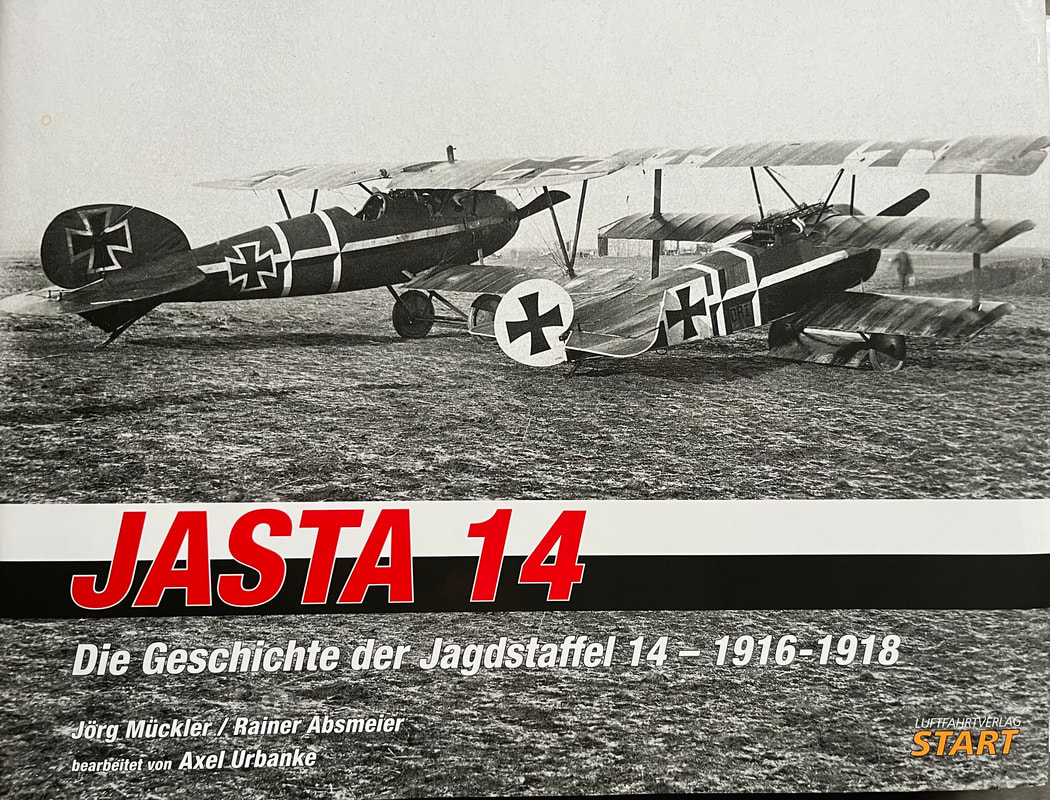
ATTRES 049 1/24 Fokker DR.I cowling with enlarged cooling holes
Several Jasta 14 DR.I's survived into the hot Summer of 1918 and as result had their cooling holes enlarged in-the-field to prevent the engine over-heating. Jasta Boelcke also adopted this practice.
A different shape of cutout - and a side shape - are inscribed on the inside of your cowling. These shapes can be realised by careful filing.
Cowling design by Mike Swinburne.
These enlarged holes are version 'A', slightly smaller and less 'kidney-shaped' than another version.
ATT24031 (Meng kit) Fokker DR.I 574/17 pilot unknown, Jasta 14
Late production DR.I with smaller axle wing. The unusually proportioned national marking alterations show that not all ground crew fully understood the confusing directives from Idflieg when re-painting!
This machine appears to have had its cowling cooling holes enlarged.
Please consider resin casting ATTRE 049
ATT24034 (Meng kit) Fokker DR.I 160/17 (unconfirmed) Ltn. der Reserve Josef Schulte, Jasta 14
Ltn. der Reserve Schulte had two Dr.I's similarly painted with a wound stripe over the units vertical black and white vertical fuselage band. He crashed both and no known photographs can confirm their serial numbers.
As with many Jasta 14 triplanes, ground crew do not appear to have been in a hurry to alter the wing crosses to the straight-armed 'Balkenkreuz' style which were altered on the (easier to reach!) fuselage and rudder.
This early machine appears to have had the cowling cooling holes enlarged.
See resin cast item ATTRES 049
ATT24036 (Meng kit) Fokker DR.I 588/17 Ltn. Hans Werner, Jasta 14
The second of two similarly painted DR.I's of Ltn. Werner. whilst under his ownership it retained the original 'Eisernes Kreuz' (Iron Cross) national markings and he had added red to the vertical fuselage bands.
Confusion over serial numbers in British capture reports has meant that positive identification is difficult - 583/17 is another possibility.
This machine was passed on to new pilot Ltn. Reinhold Preiß, who was brought down eleven days later on the 9th August 1918. By then it had the fuselage and rudder national insignia updated in line with Idflieg orders. See ATT24037.
ATT24037 (Meng kit) Fokker DR.I 588/17 Gefreiter Reinhold Preiß, Jasta 14
This machine was passed on to new pilot Ltn. Reinhold Preiß, who was brought down eleven days later on the 9th August 1918. he was captured alive and made a P.O.W.
By then it had the fuselage and rudder national insignia updated in line with Idflieg orders but not the wings. Ground crew had more pressing concerns in the Summer of 1918..
This late production machine appears to have had the cowling cooling holes enlarged.
See resin cast item ATTRES 049.
